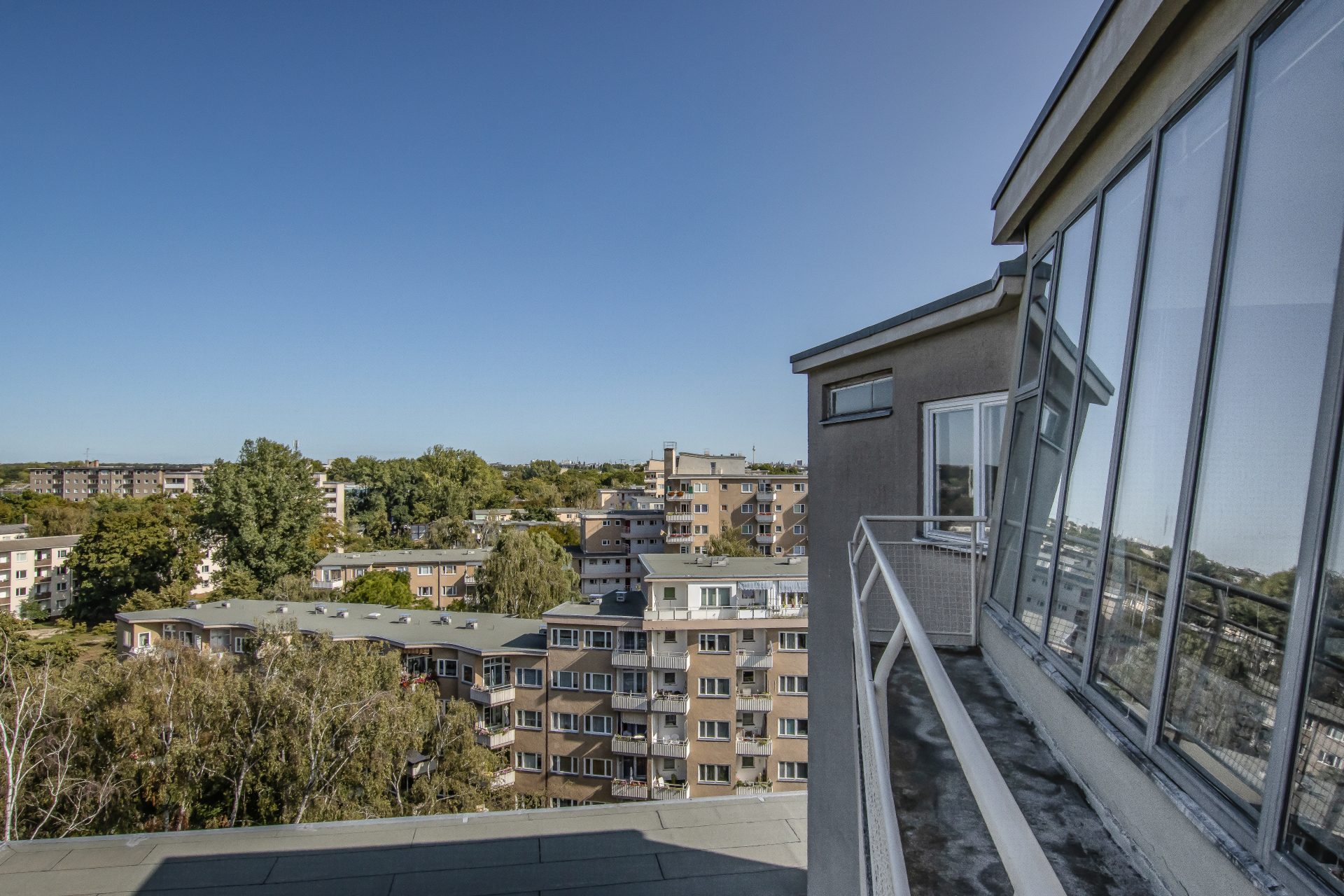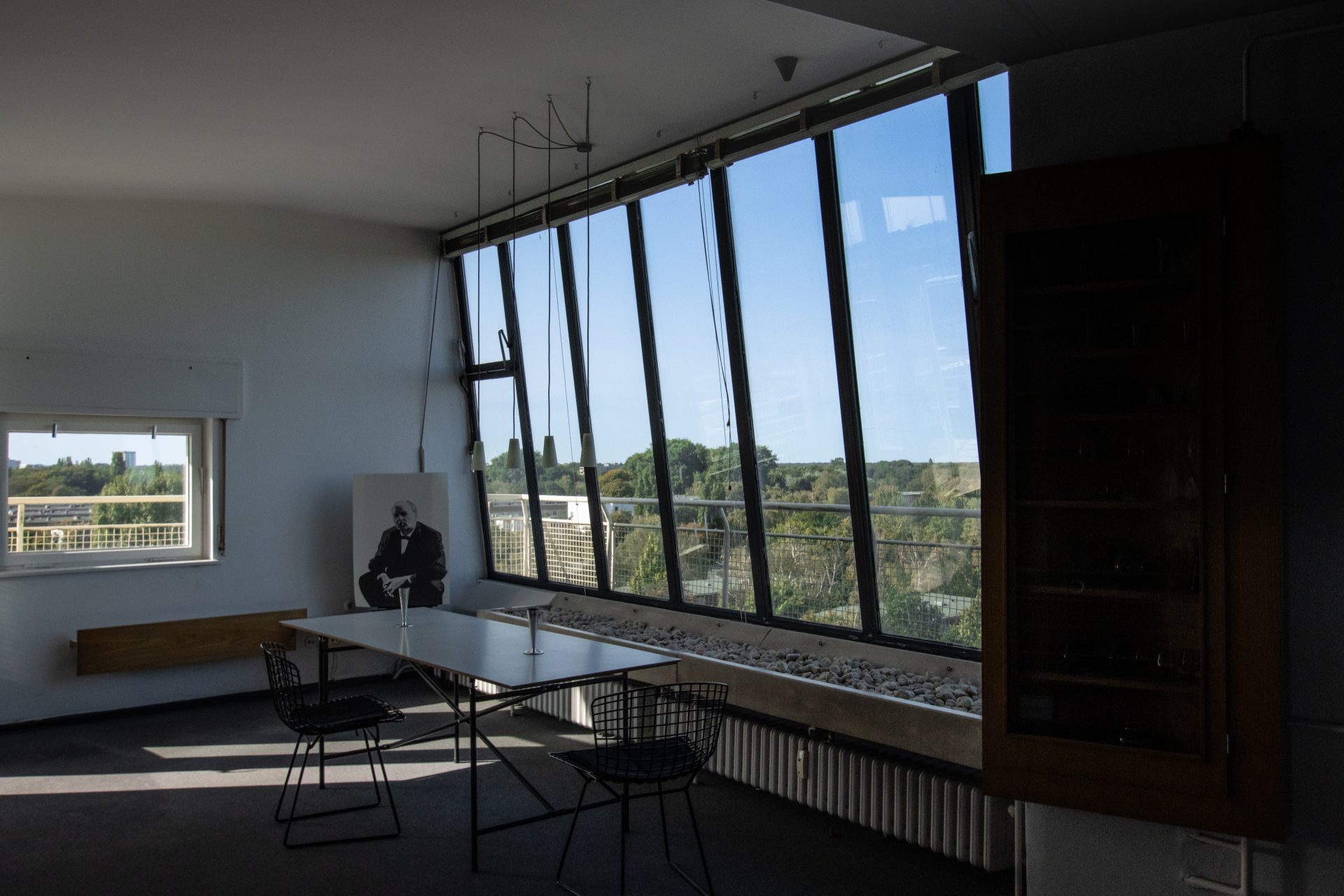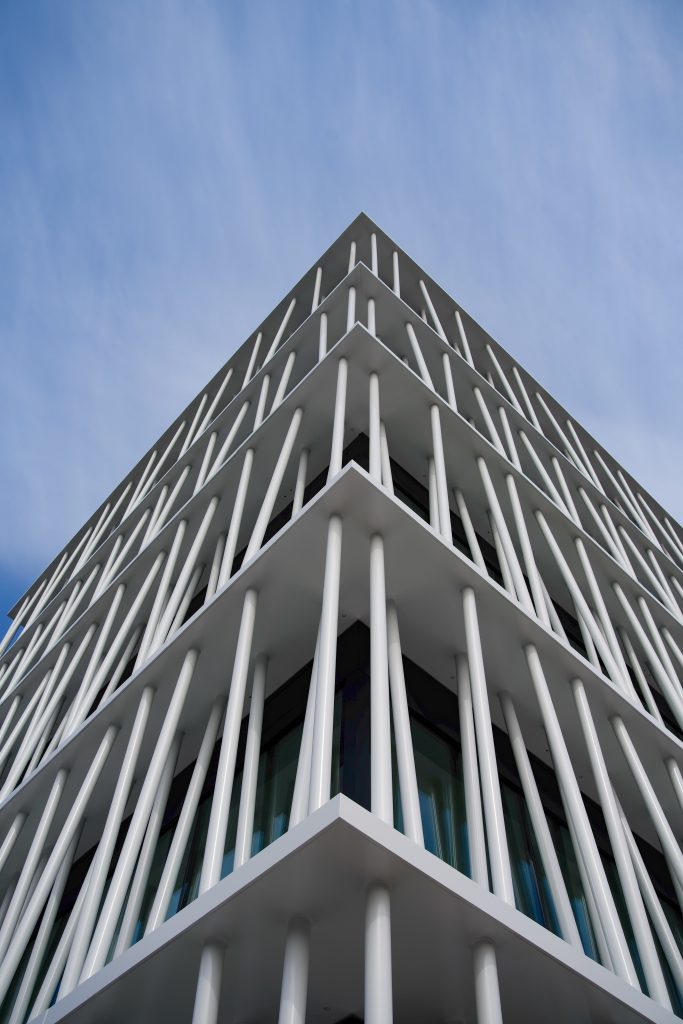Photo Series: Where light, air and sun become constructed reality
The Ringsiedlung, also known as the Siemensstadt housing estate, was built between 1929 and 1931. It is one of Berlin’s six housing estates of the modernist era, designated as a UNESCO World Heritage Site. The housing project was designed by six architects who belonged to the association “Der Ring”, which was how the estate came to be called the “Ringsiedlung”.
-
The city park at Jungfernheide was created at the start of the 20th century. The park’s location played a central role in the concept and design of the Ringsiedlung. This was where the philosophy of Neues Bauen became constructed reality, where light, air and sun were deemed crucial for the recreation and health of the residents.
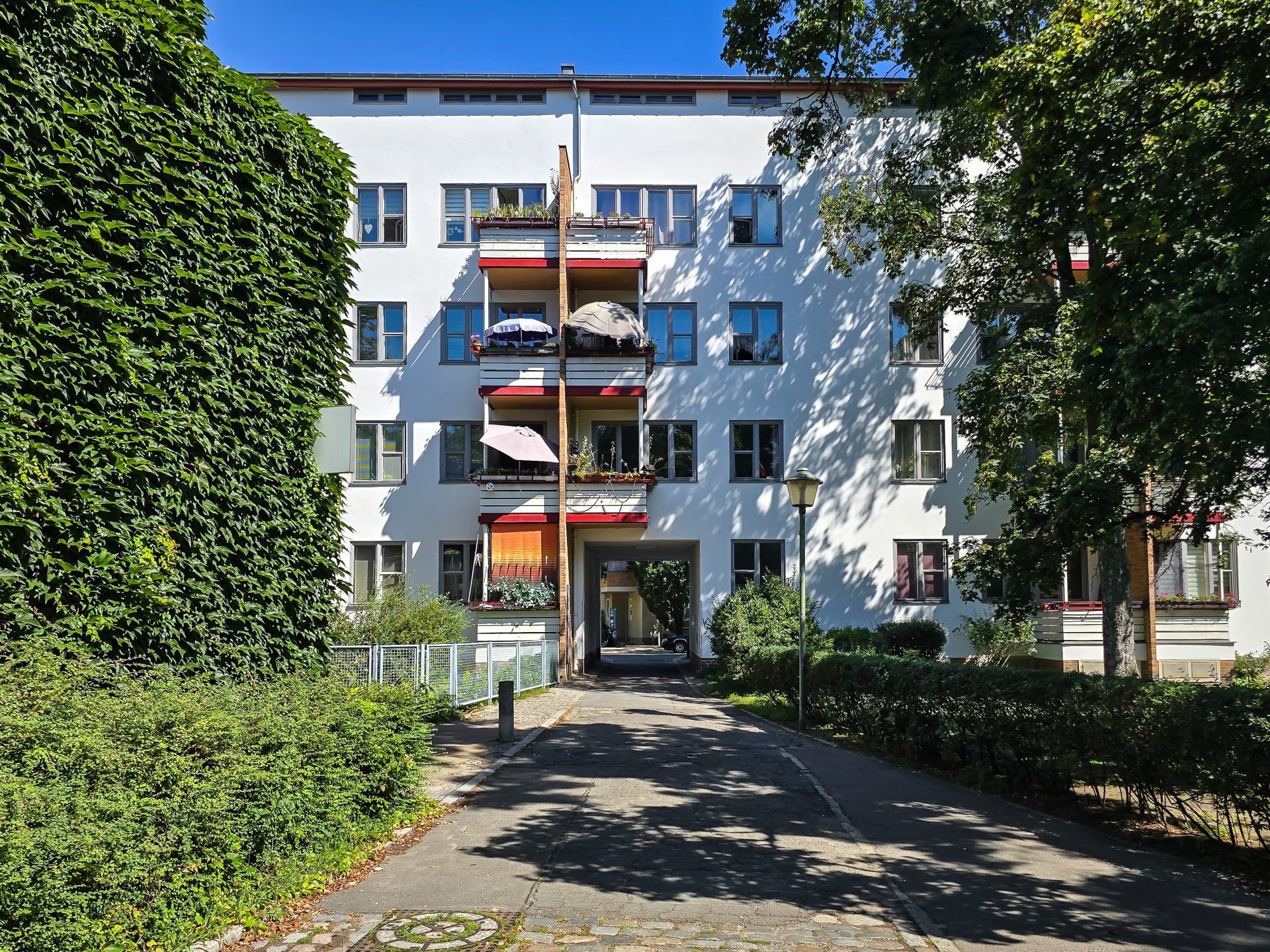
Lorem ipsum
-
This philosophy is evident in the buildings’ balconies, large windows, spacious front gardens and green inner courtyards.
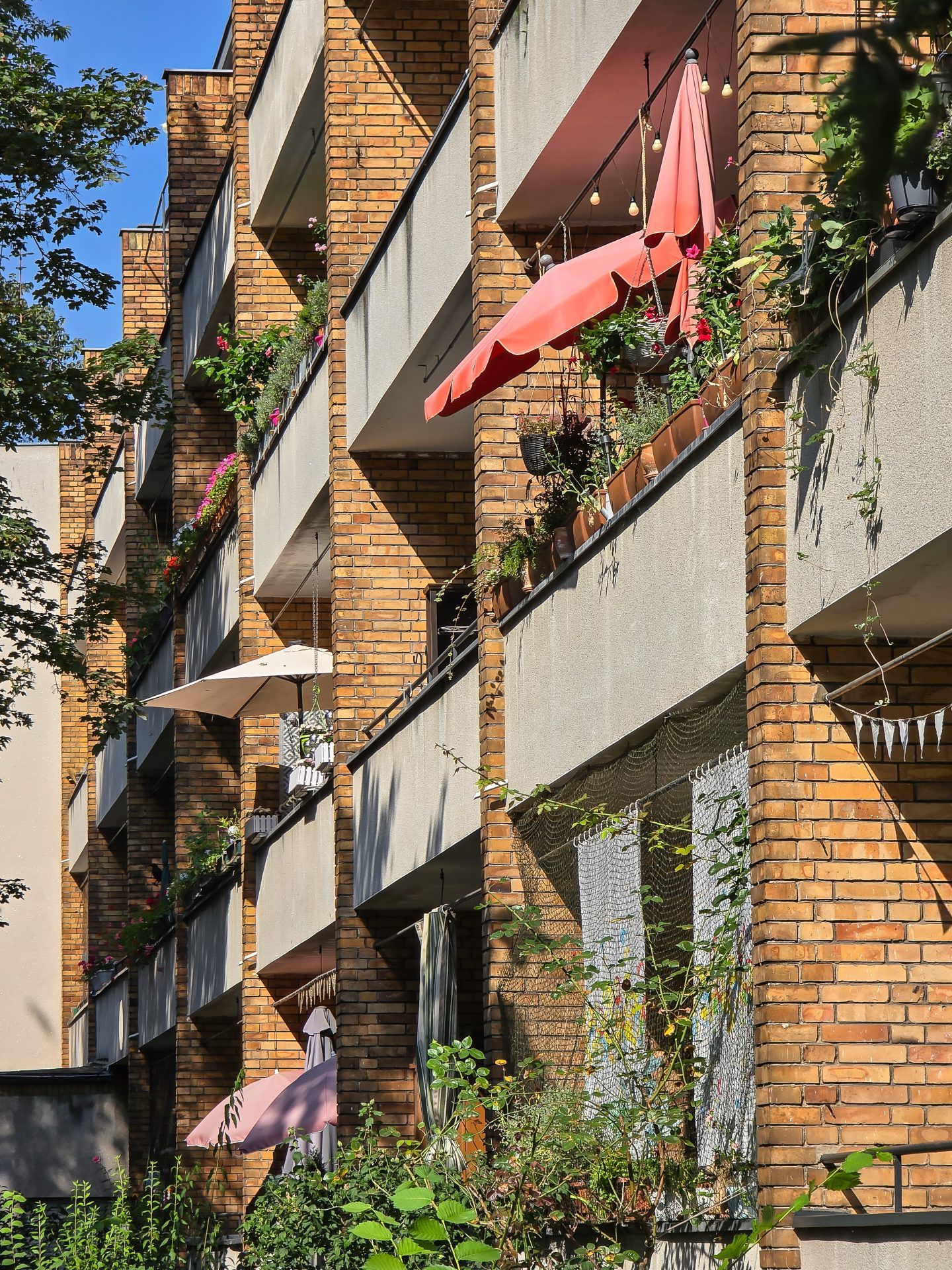
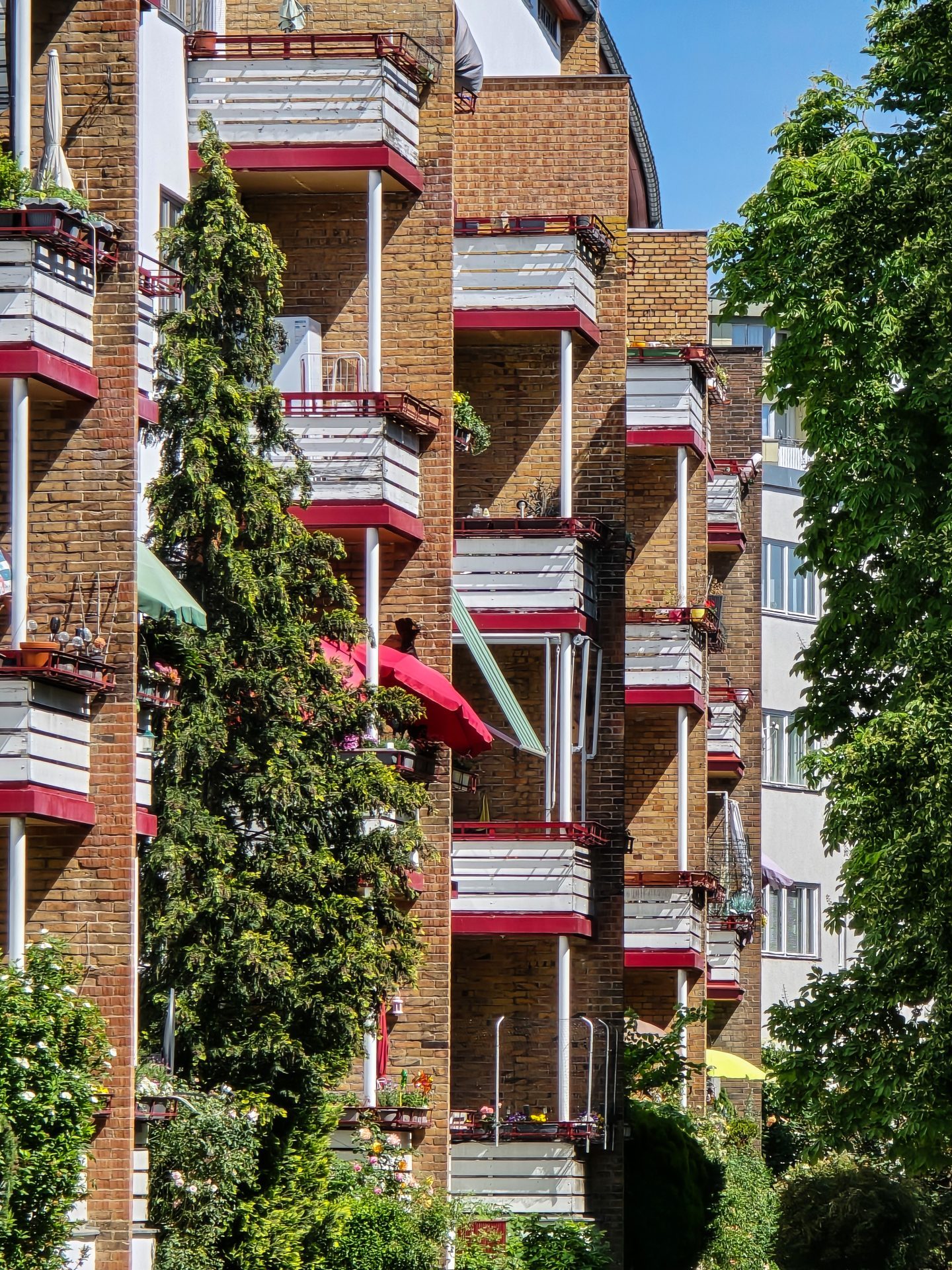
Architecture with shipbuilding motifs
When approaching the Ringsiedlung from the Siemensdamm underground station, one notices how the buildings by Hans Scharoun are grouped together to the left and right of Jungfernheideweg, forming a gateway to the housing estate. The elongated building to the left is commonly called the “Panzerkreuzer” (armoured cruiser) on account of its ship-like architectural elements. In many of his architectural projects, Hans Scharoun played with shipbuilding motifs – and this building is no exception. The curved balcony balustrades resemble a ship’s railing, the mounted rooftop recalls a ship’s bridge, and the rounded windows appear as portholes. After it was completed, Scharoun himself took up residence in a flat in this housing block. When approaching the Ringsiedlung from the Siemensdamm underground station, one notices how the buildings by Hans Scharoun are grouped together to the left and right of Jungfernheideweg, forming a gateway to the housing estate. The elongated building to the left is commonly called the “Panzerkreuzer” (armoured cruiser) on account of its ship-like architectural elements. In many of his architectural projects, Hans Scharoun played with shipbuilding motifs – and this building is no exception. The curved balcony balustrades resemble a ship’s railing, the mounted rooftop recalls a ship’s bridge, and the rounded windows appear as portholes. After it was completed, Scharoun himself took up residence in a flat in this housing block.
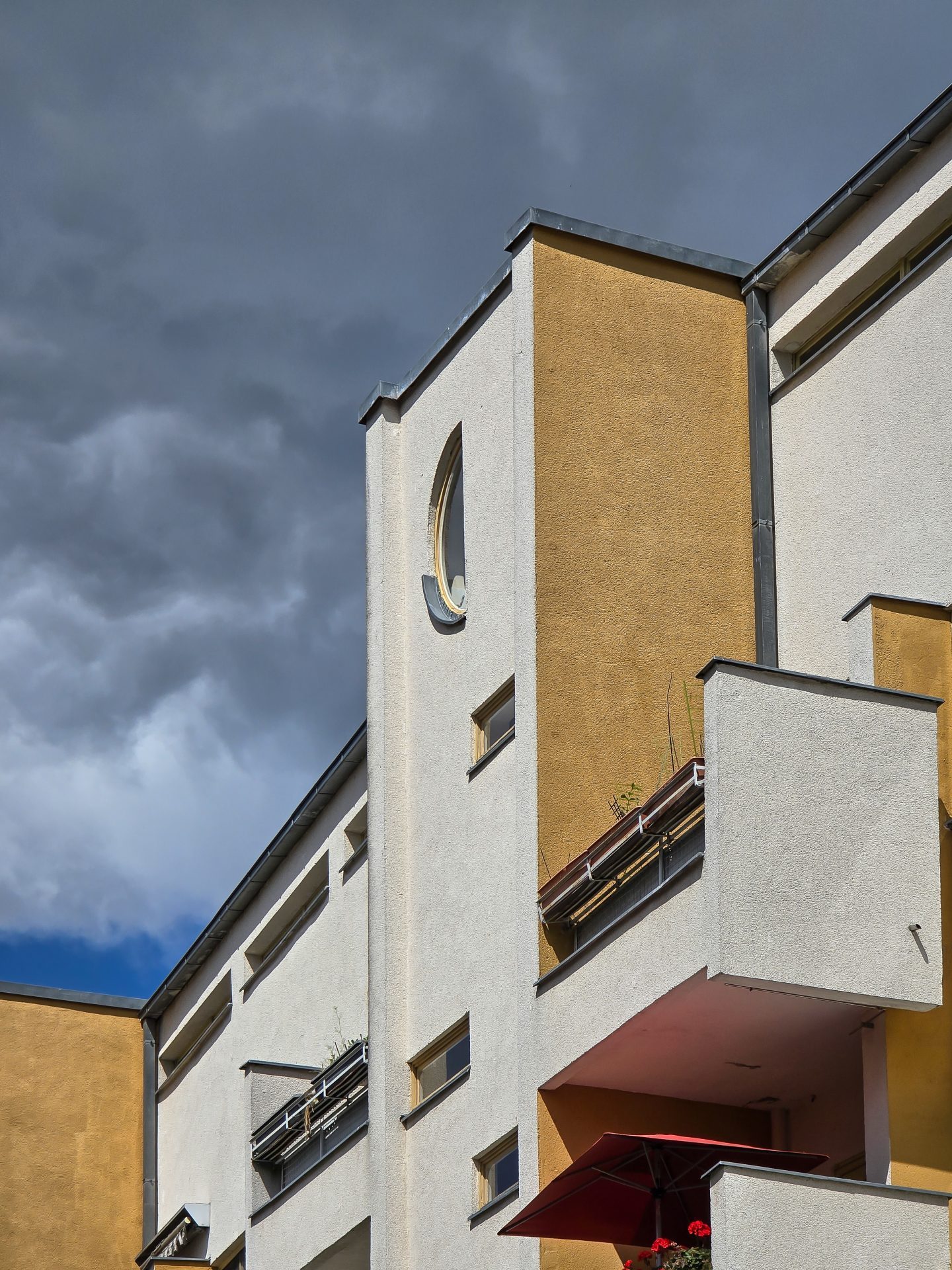
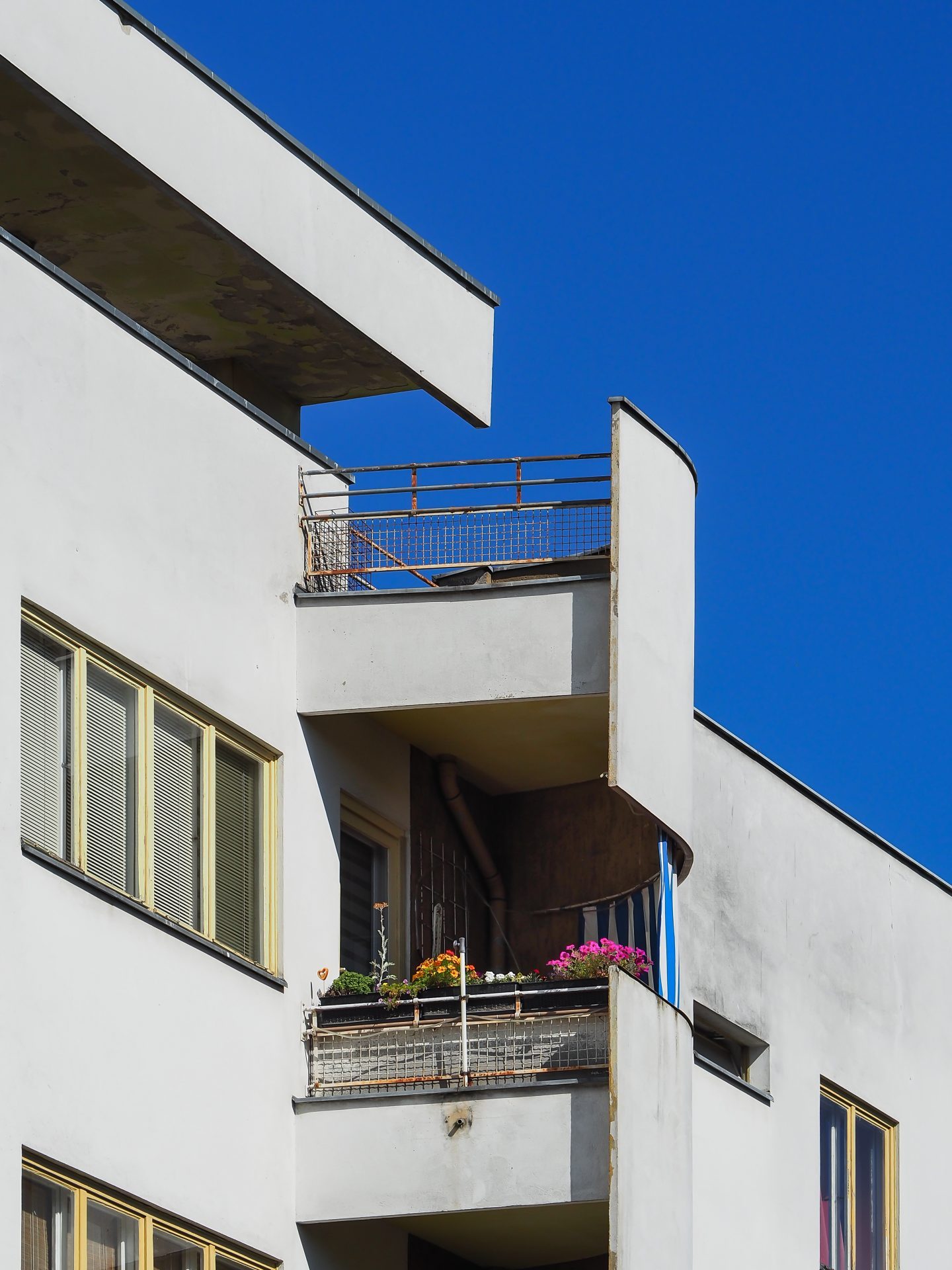
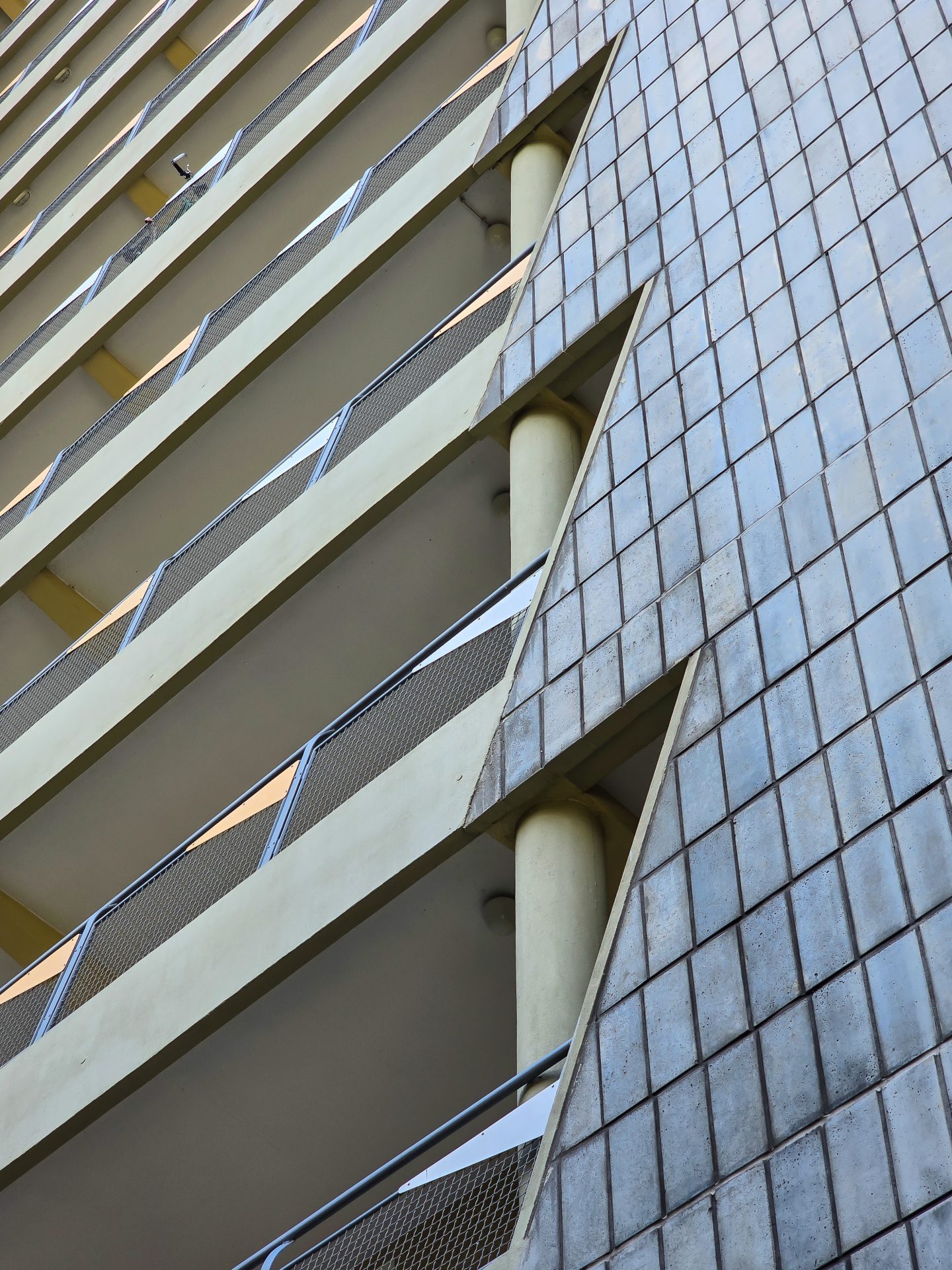
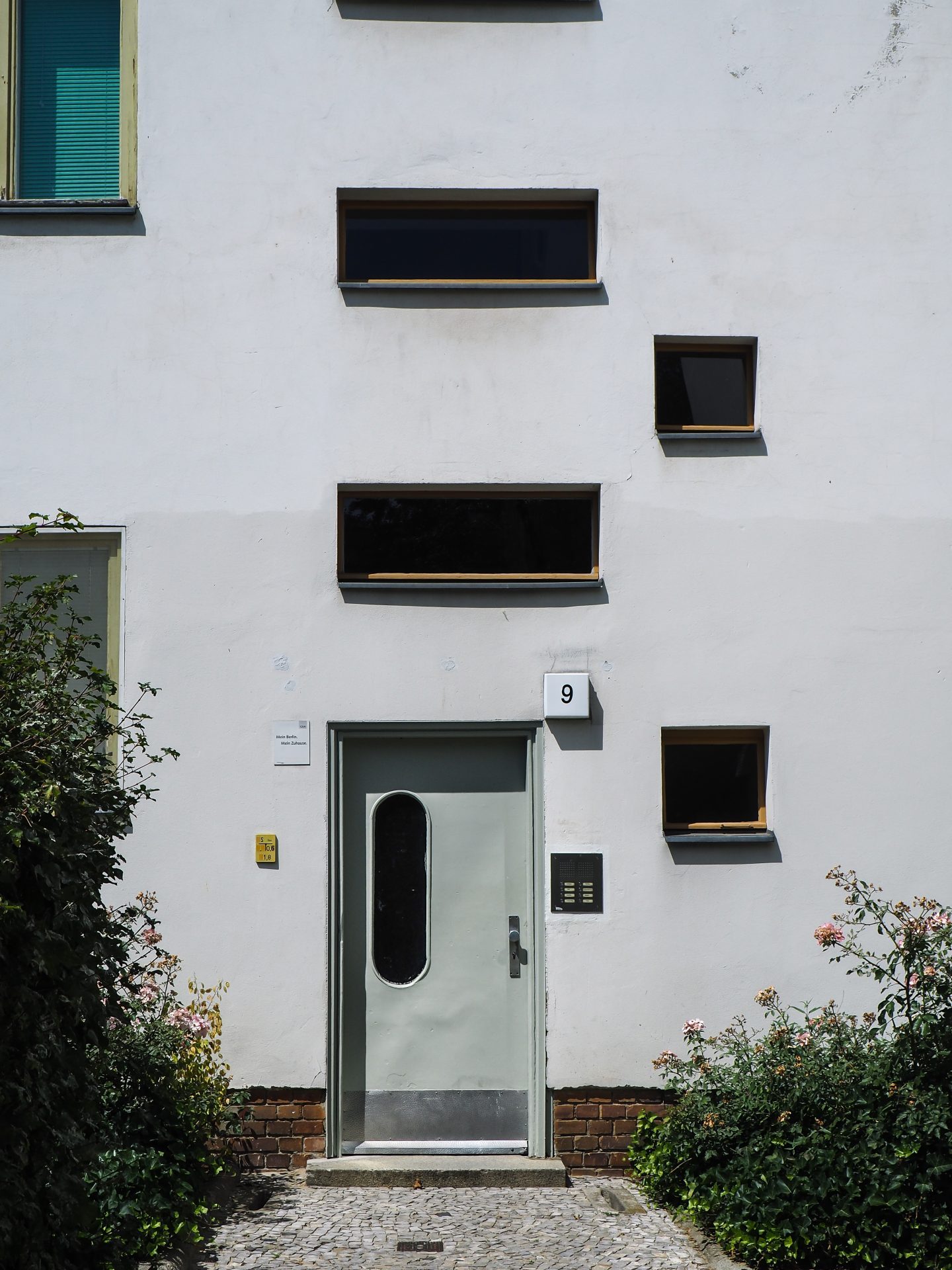
Communal roof terraces as an architectural concept
-
Continuing along Jungfernheideweg, one arrives at the Siemensbahn railway overpass. The bridge had already been built prior to construction of the Ringsiedlung, and its train transported factory workers to the Siemens factory from all across the city. Starting here, housing blocks designed by Walter Gropius are lined up to the left and right of Jungfernheideweg.
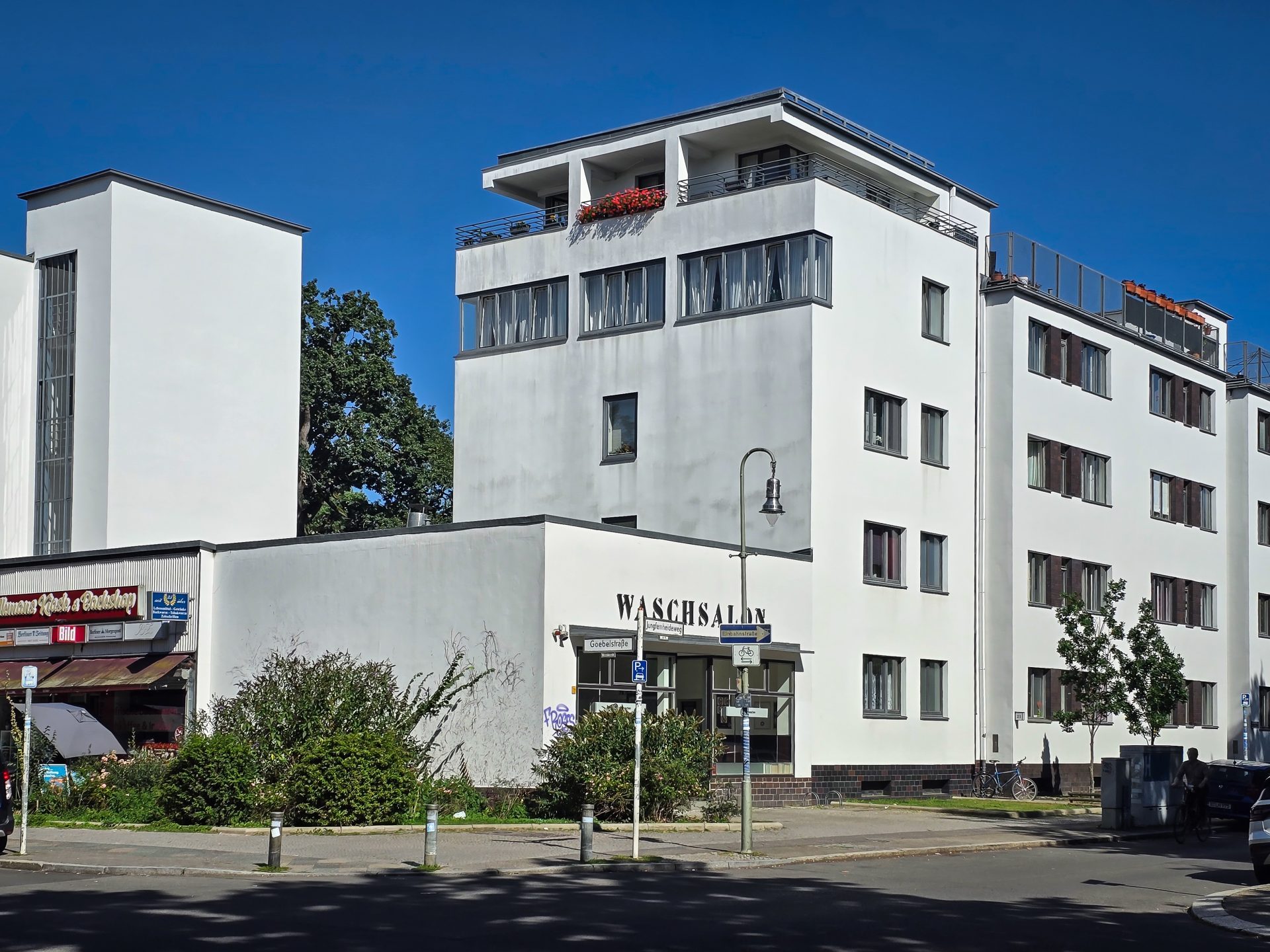
-
What’s especially striking about Gropius’s buildings is their vertically elongated, industrial-looking hall windows that stretch from the ground floor to the top storey. Another architectural element worth noting are the roof terraces which all residents jointly share. Such communal roof terraces were not unique to Gropius’s designs; many other representatives of Neues Bauen (New Building) incorporated them into their architectural plans as well.
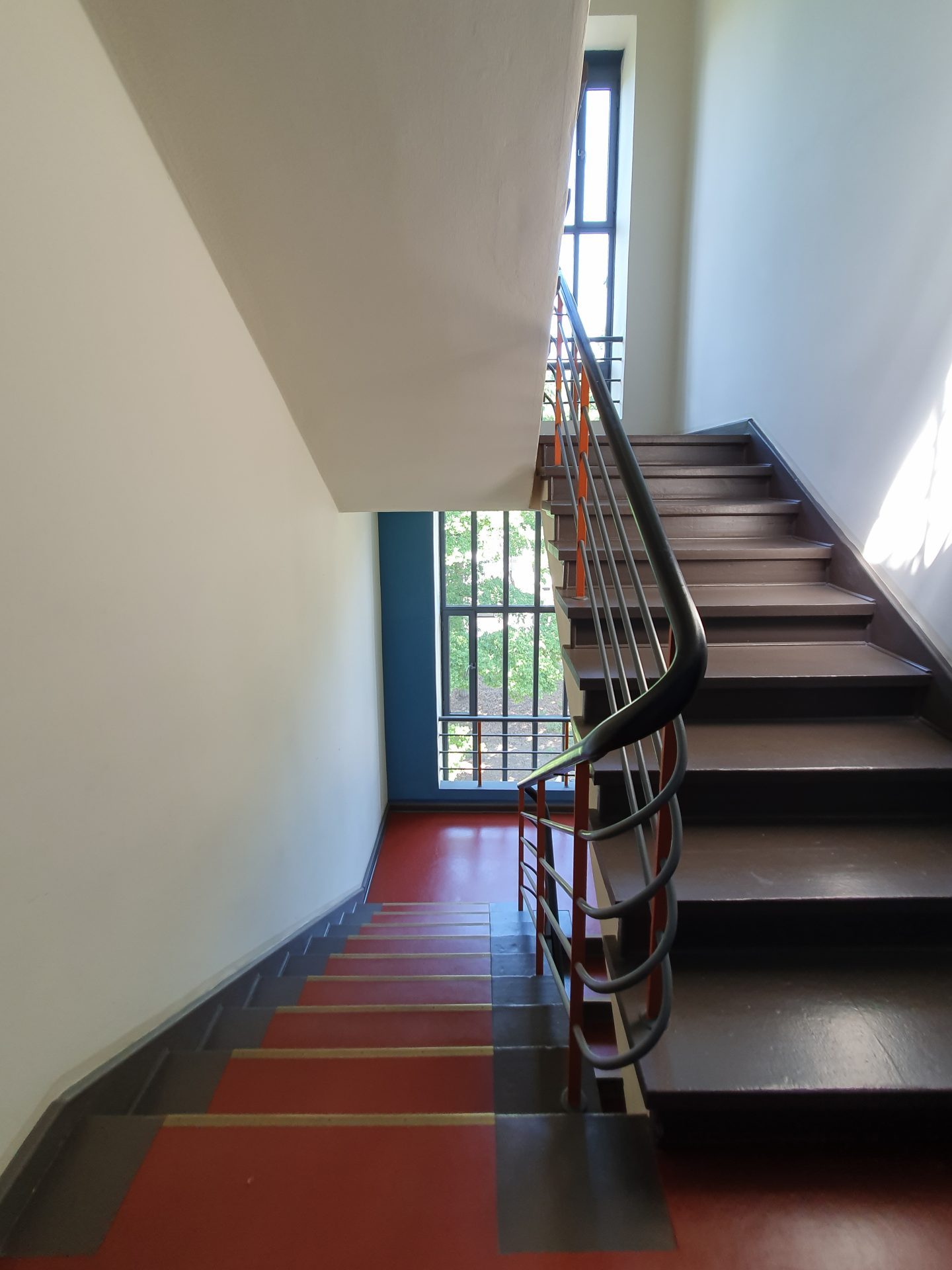
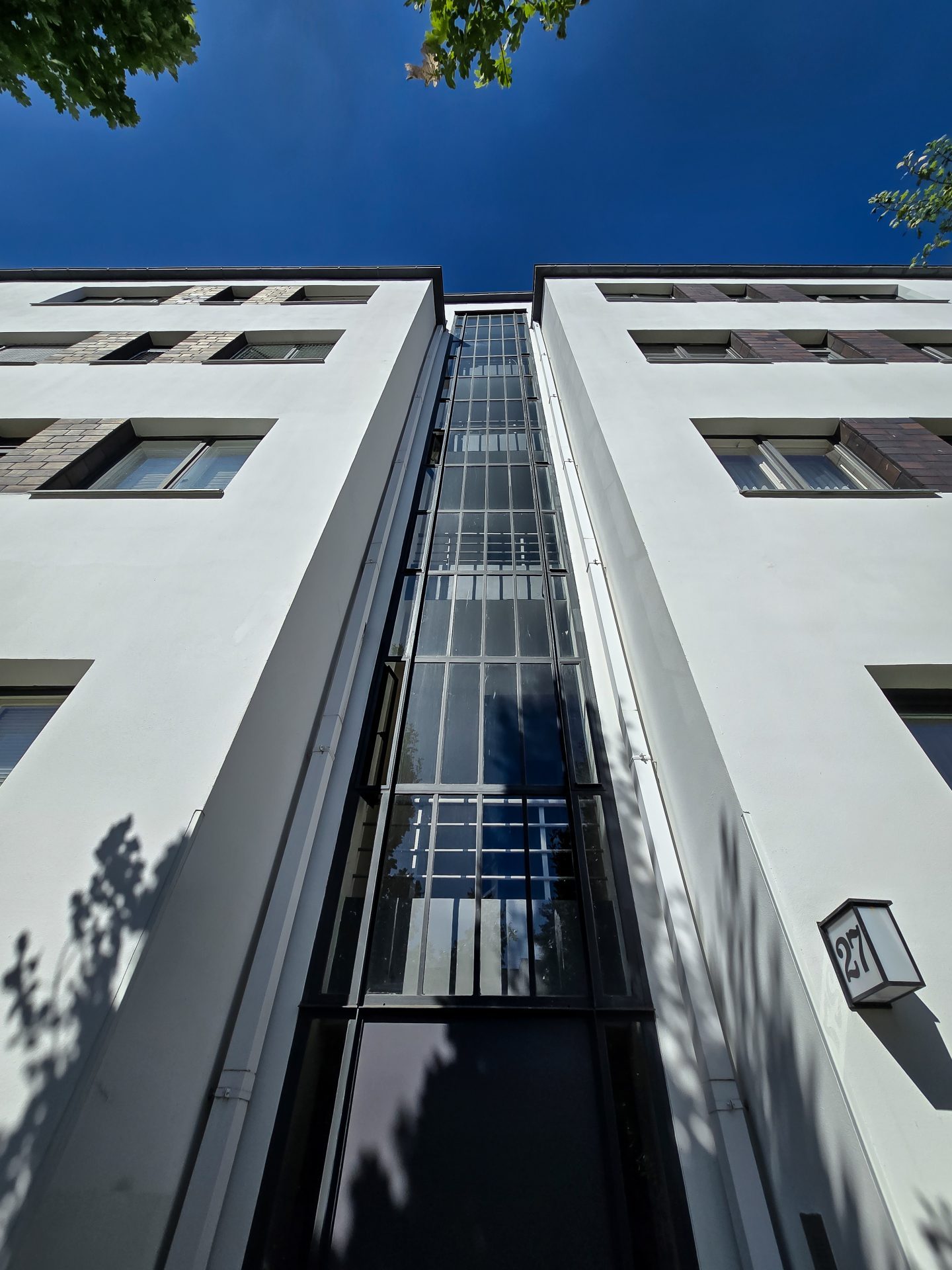
“Langer Jammer“: 324 meters with 25 house numbers
-
Another residential building located in the Ringsiedlung is known more commonly by the name “Langer Jammer“, which roughly means “long lament“. This one residential unit by Otto Bartning is home to 25 house numbers extending all the way down Goebelstrasse. Facing north toward the street, the building appears remote and monotone with a plain-looking facade, behind which one recognises utility rooms like kitchens and bathrooms. On the south side, however, the flats are equipped with balconies overlooking parklike gardens.
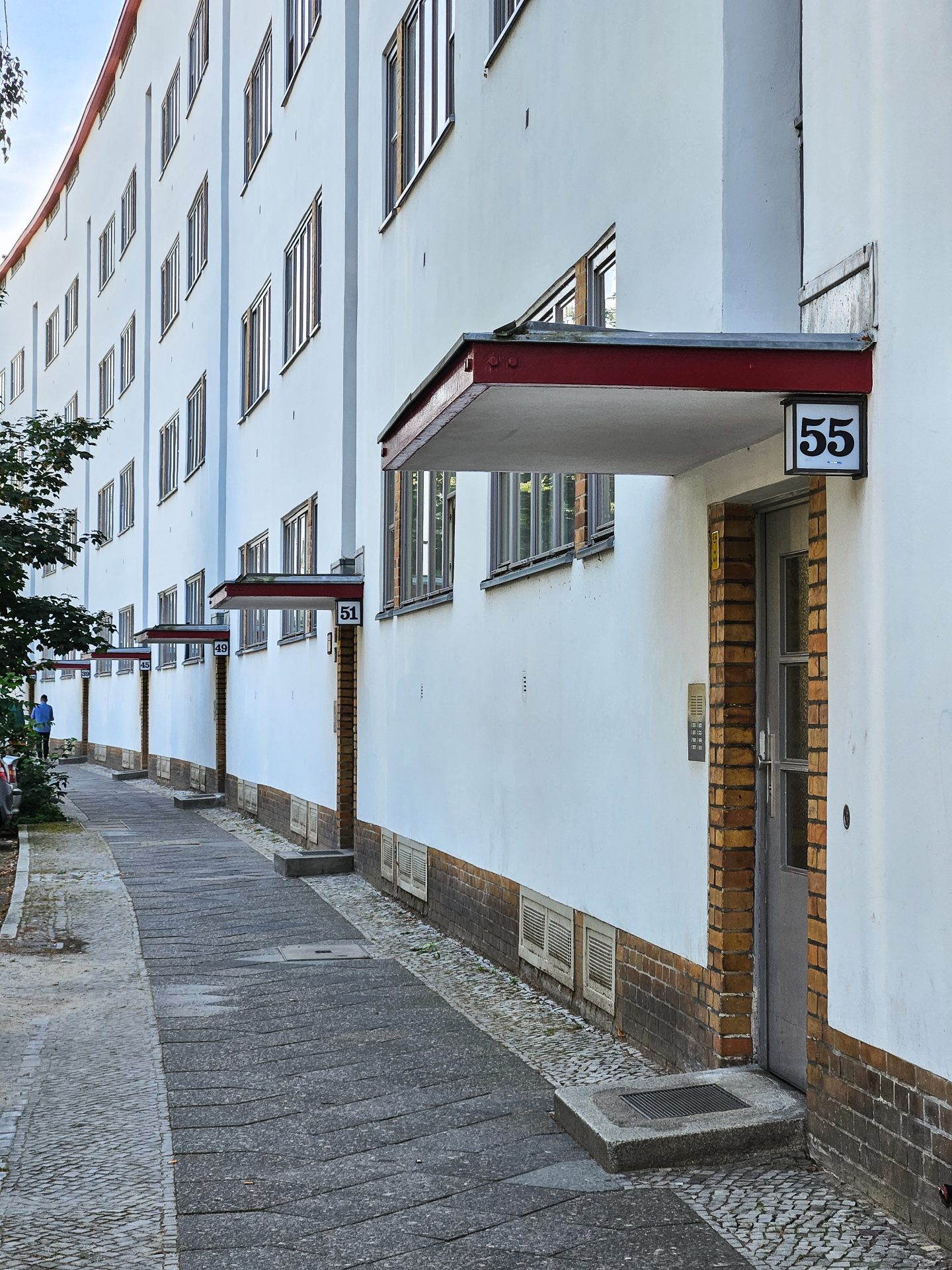
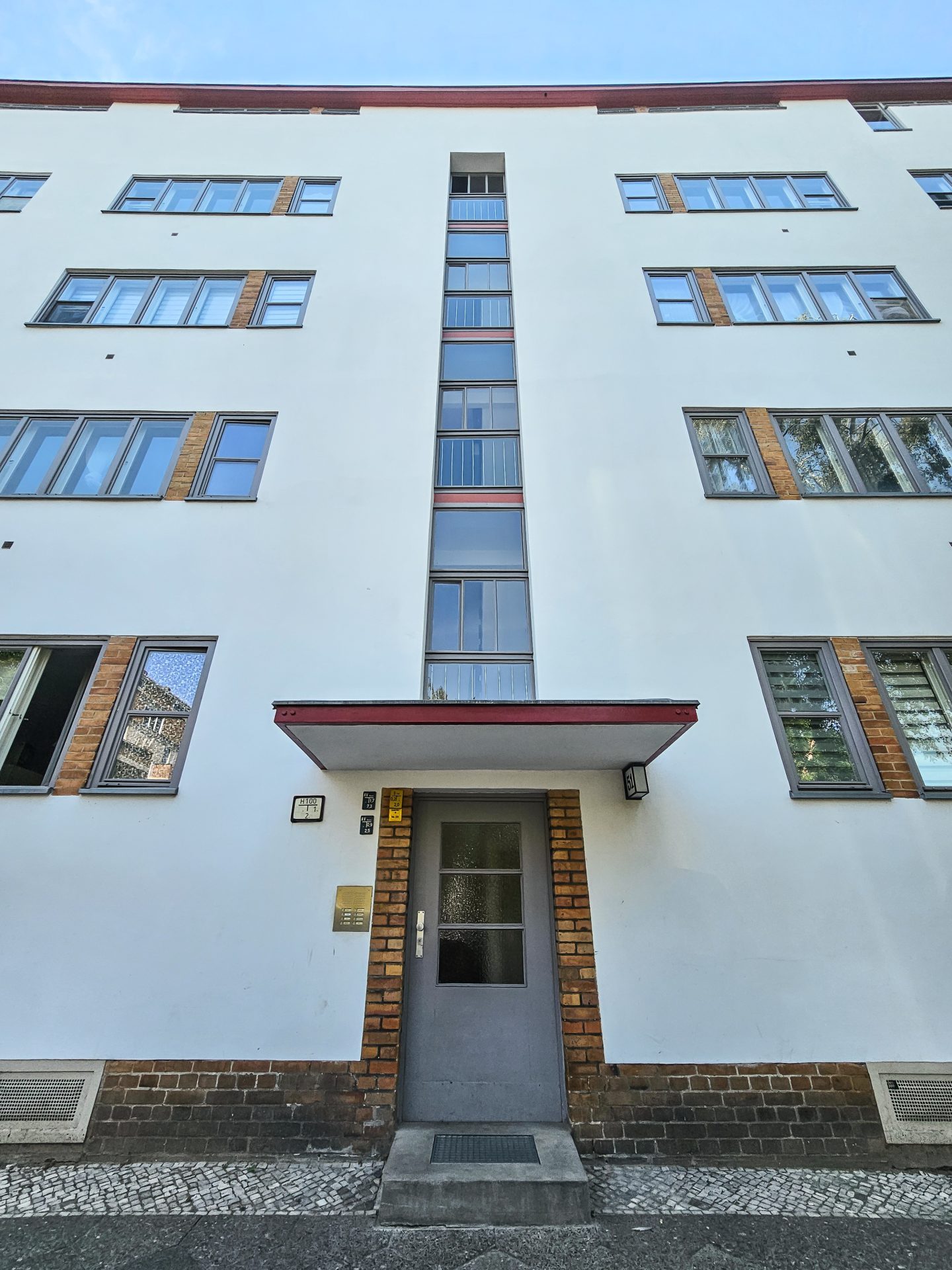
Artist studios replaced by communal drying rooms
Across from “Langer Jammer“, positioned at a right angle to the street, are nine house units designed by the architect Hugo Häring. What immediately catches the eye are the large, semicircular, honey-coloured brick balconies on the front. The rear east-facing sides, however, feature rather austere facades interrupted by mostly kitchen and bathroom windows. Häring’s original plans included penthouse artist studios, but during construction these were scuttled in favour of attic space where residents could dry their laundry.
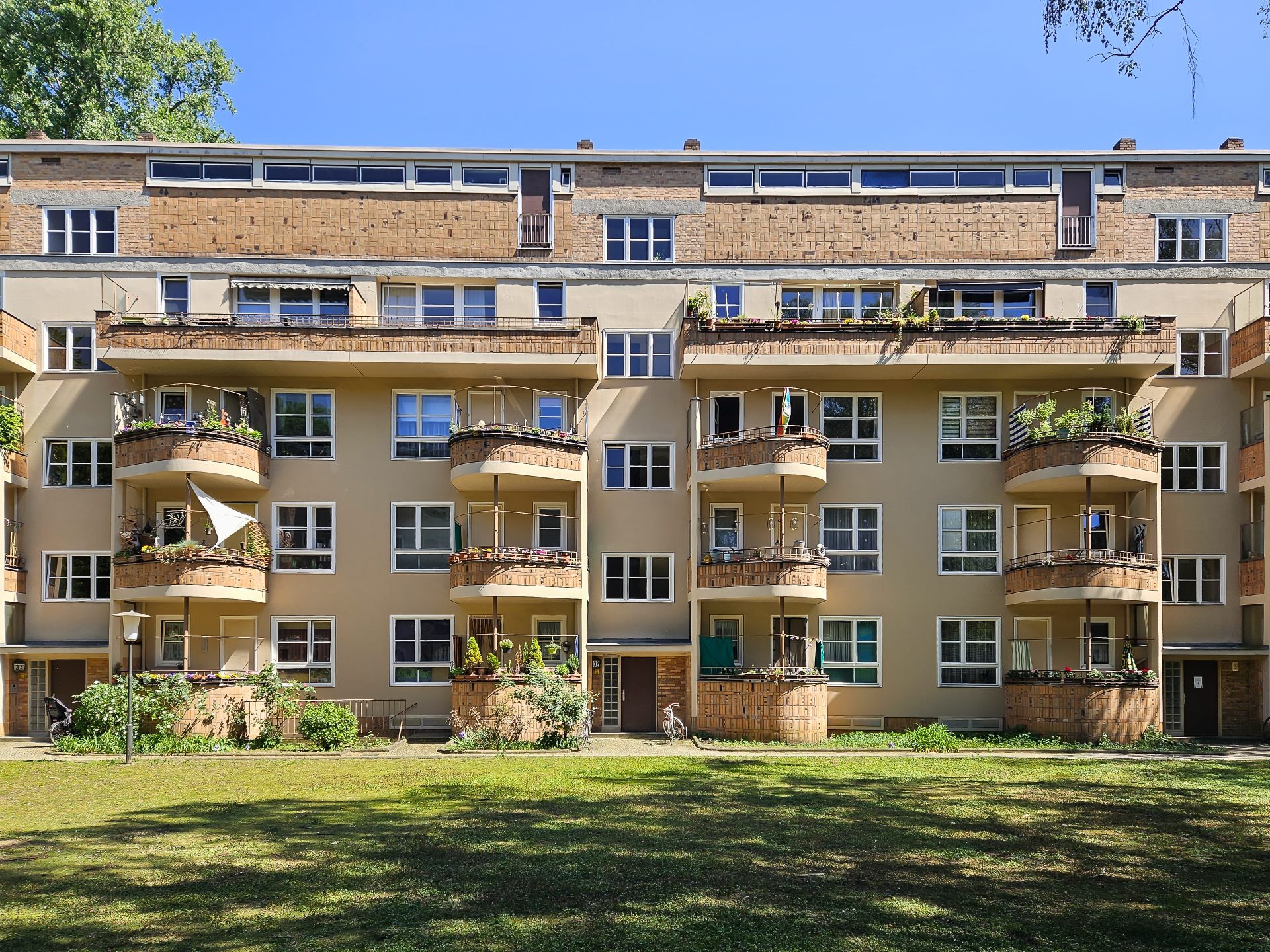
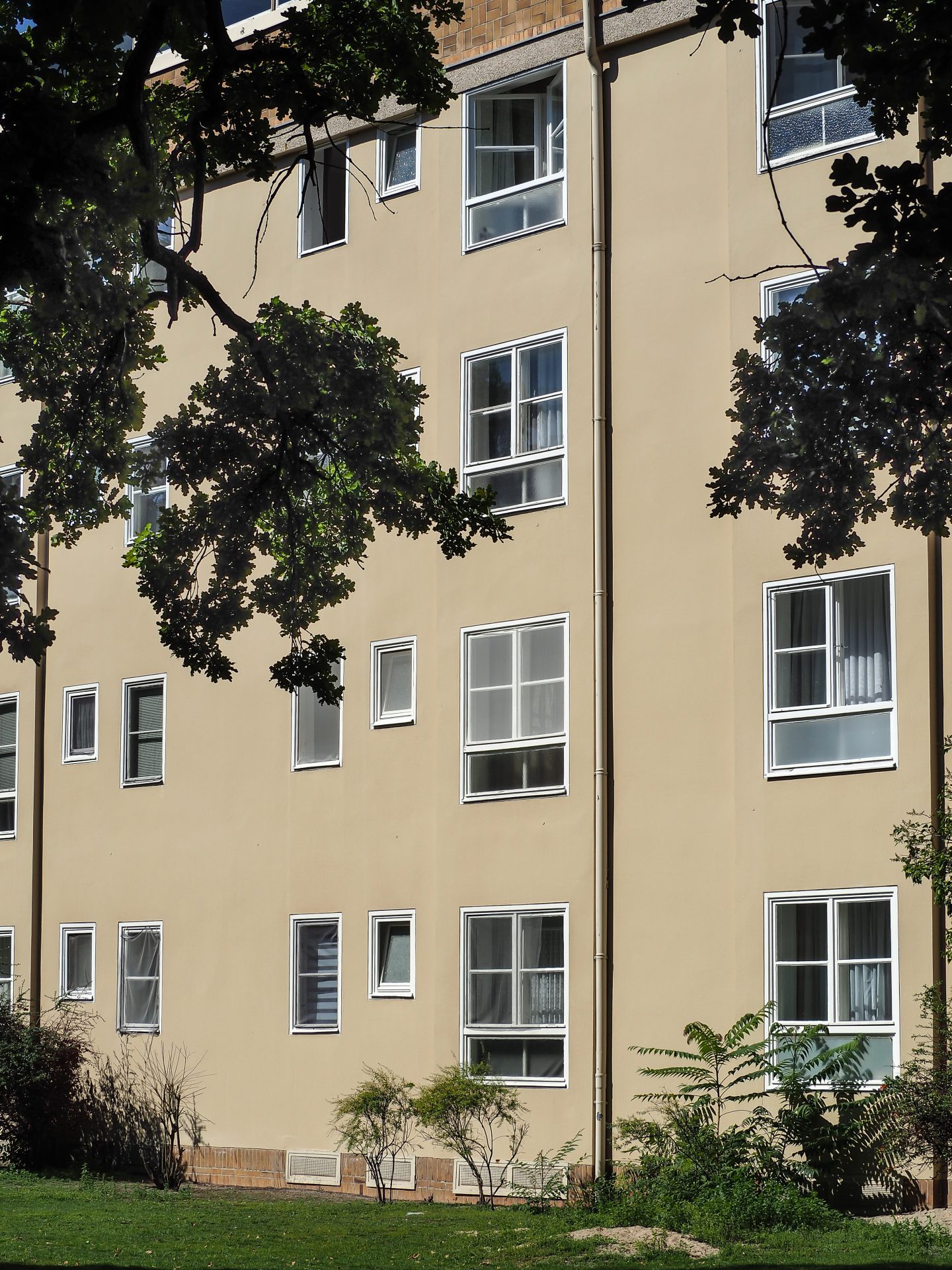
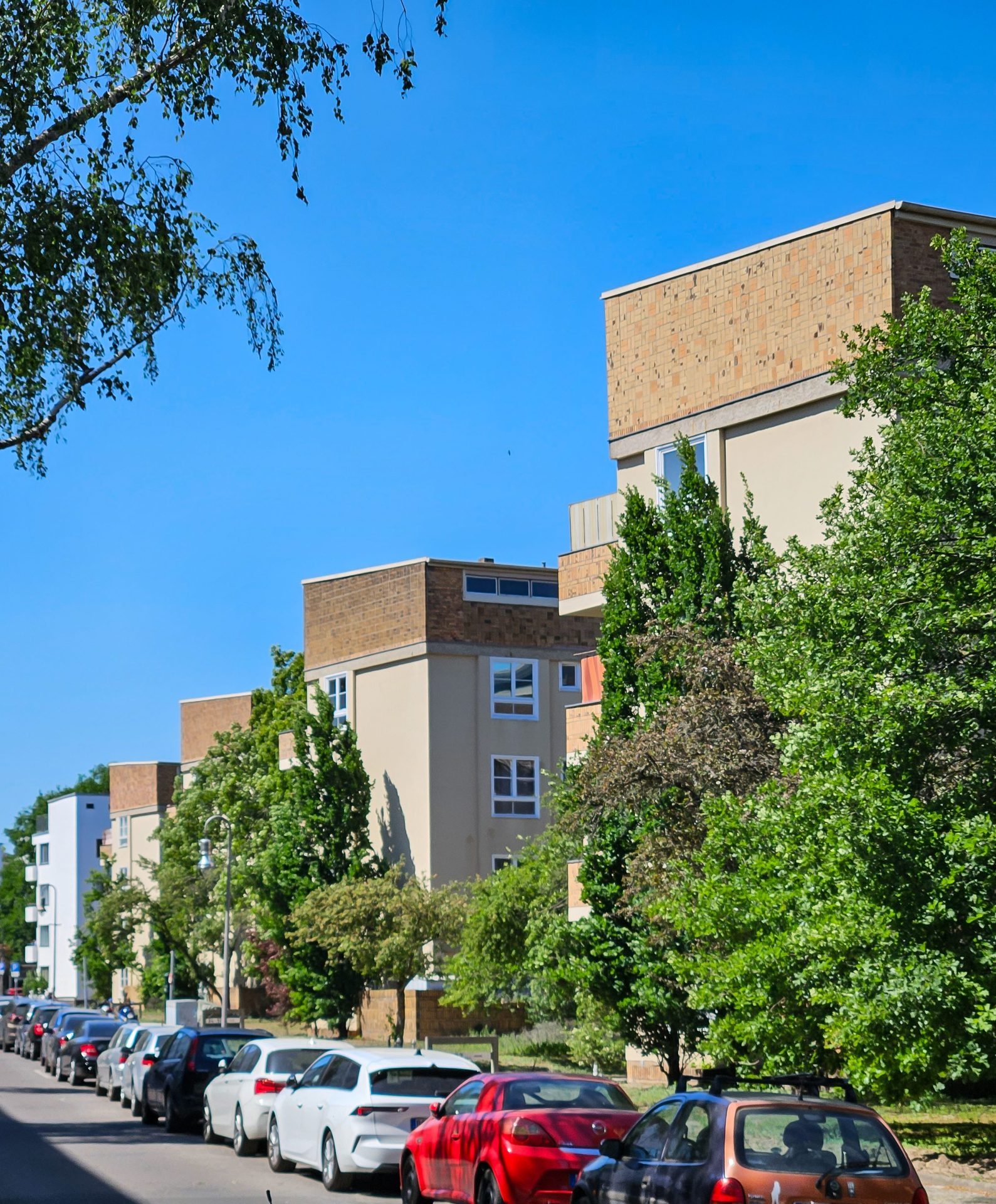
Flats with direct access to the surrounding gardens
-
The housing units situated directly opposite Jungfernheide Park were designed by Paul Rudolf Henning. Here, too, the facade features honey-colored brick alternating with plastered wall surfaces. A visual highlight is the entrance doors in varying colors, which break up the order and provide orientation for the residents.
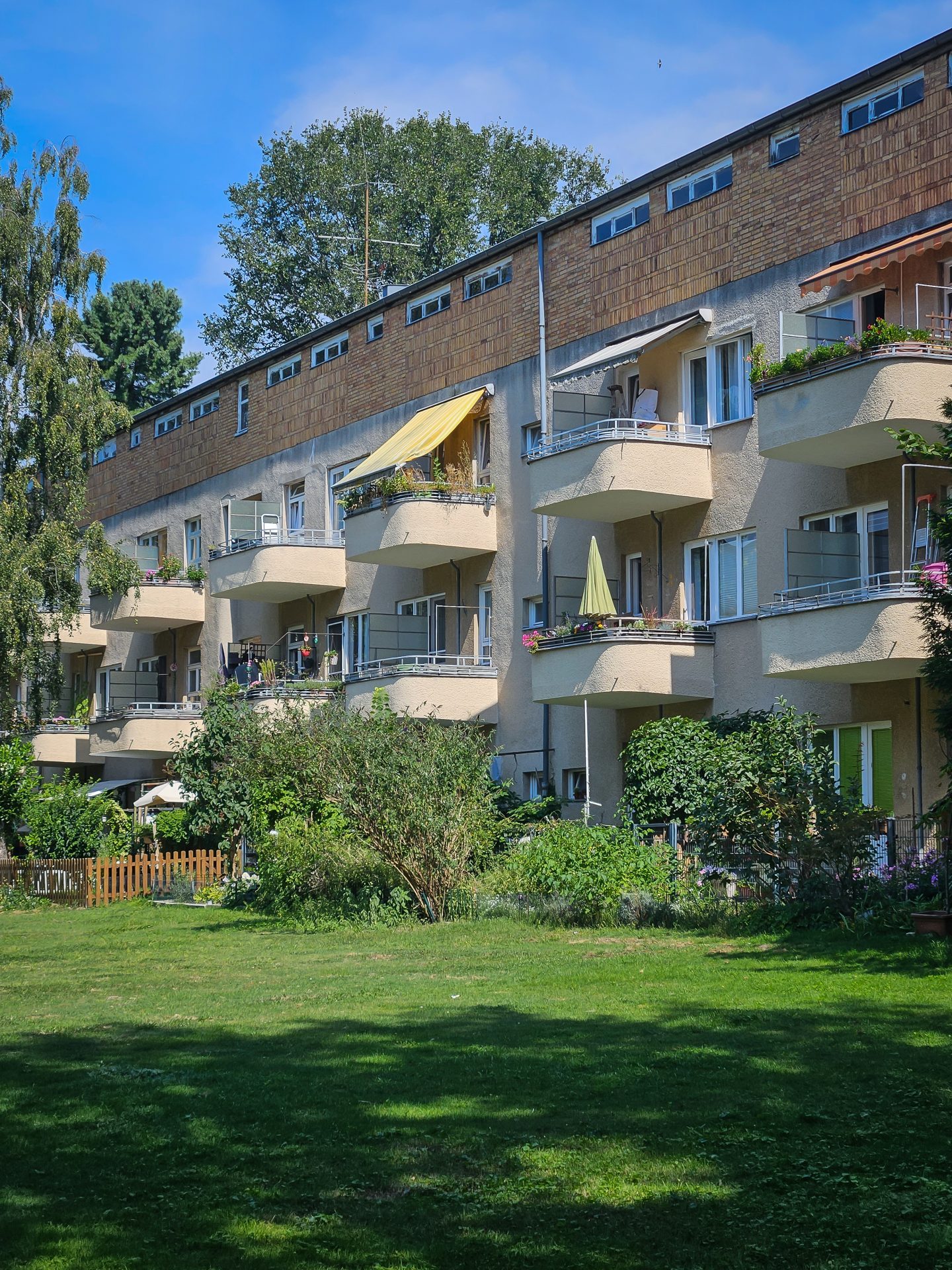
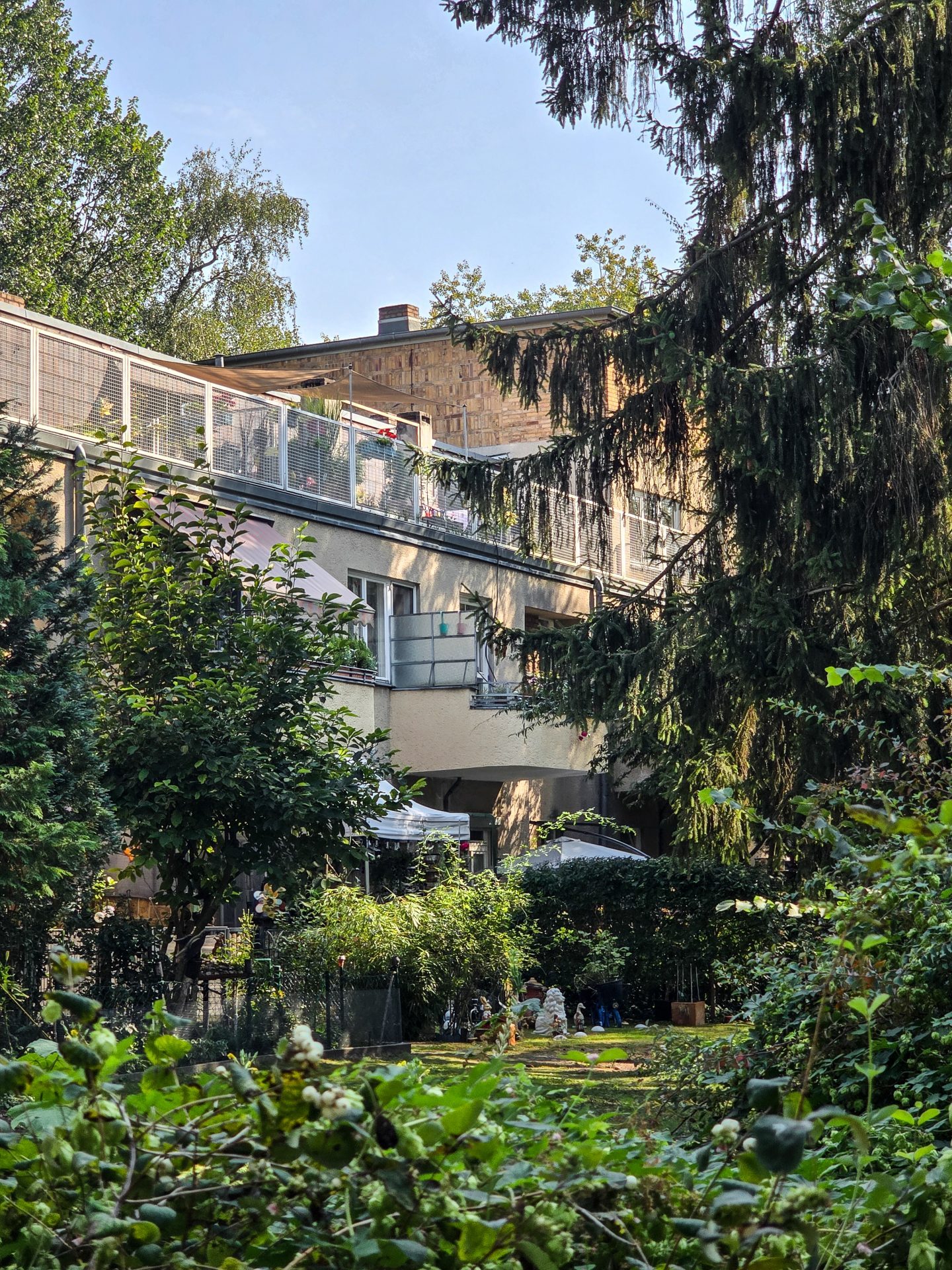
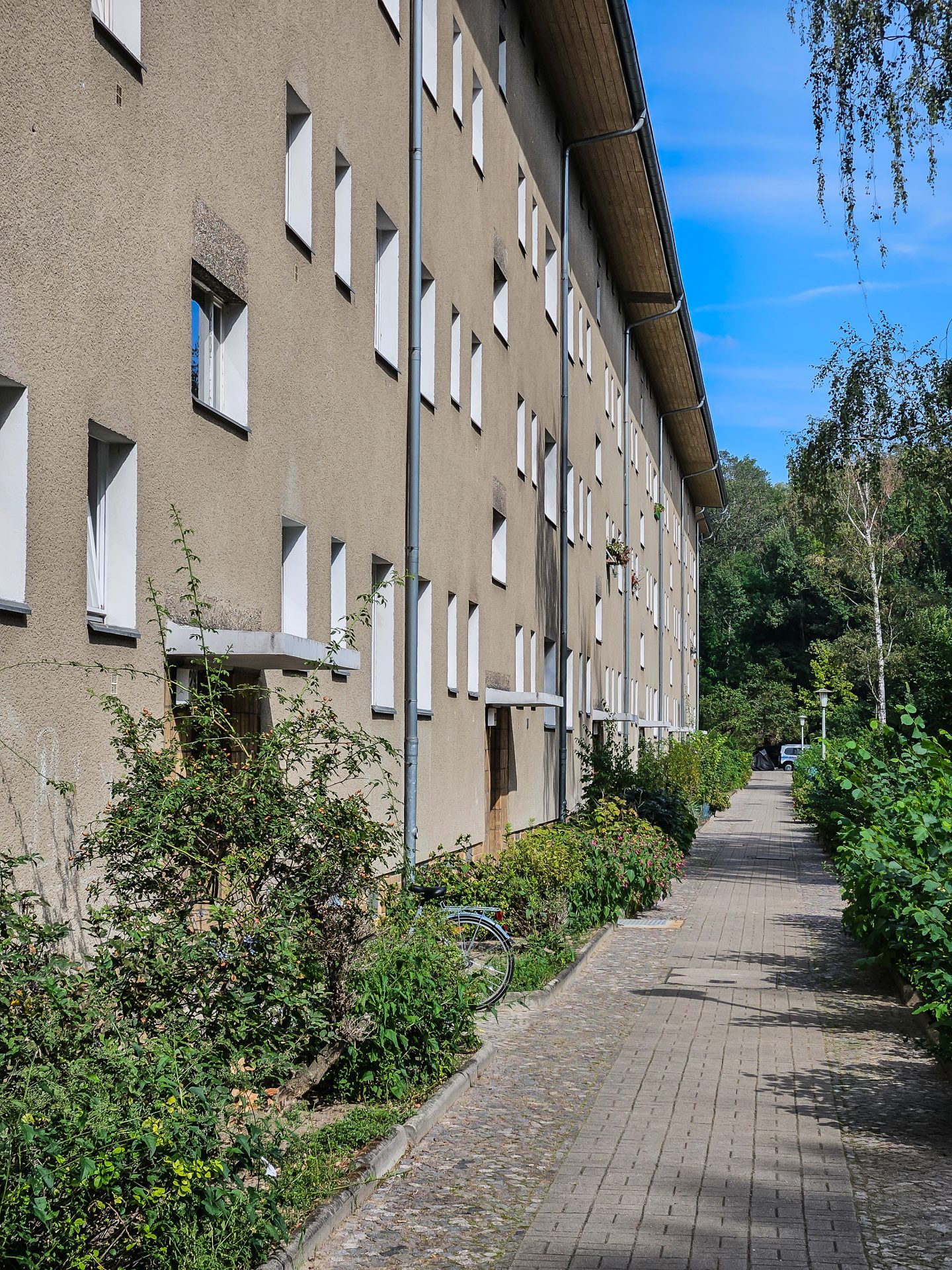
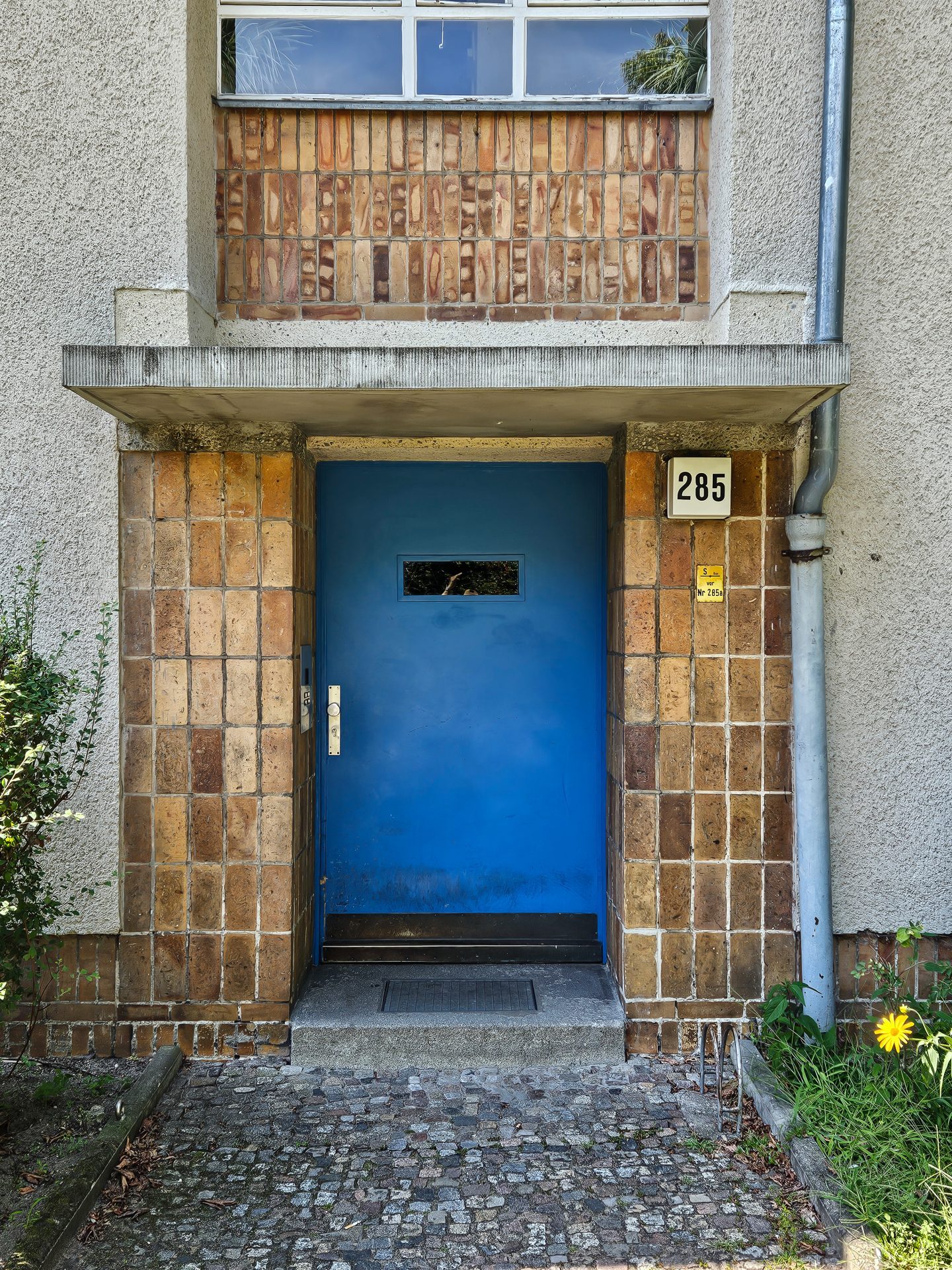
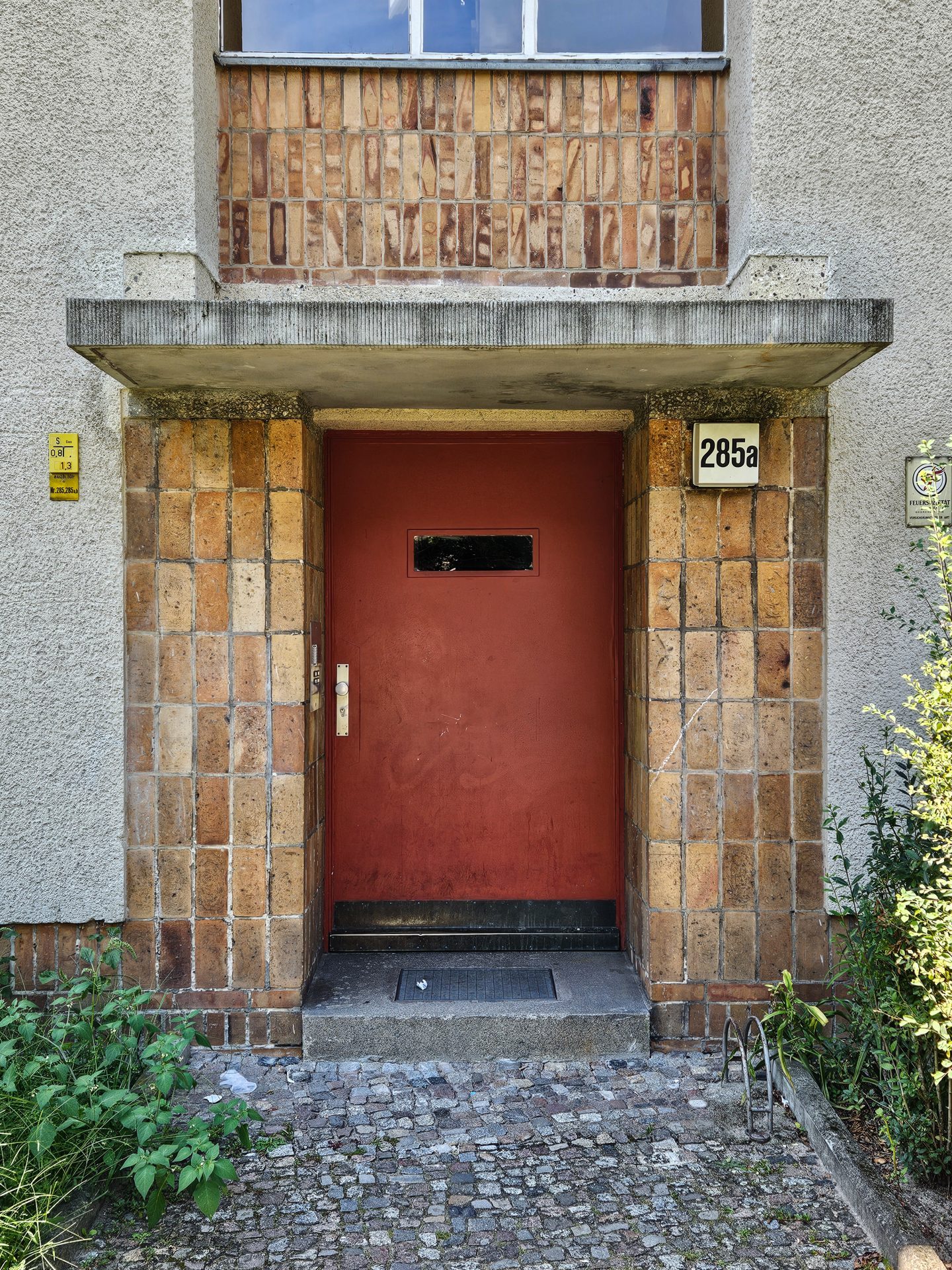
Retail space as part of the planning concept
-
The housing unit designed by Fred Forbát, located at Goebelplatz, marks the end of the old Ringsiedlung. Forbát included a charming detail in his architectural plans: a red-brick commercial annex with a glass facade. Today, the space is used as an info station highlighting the Ringsiedlung’s cultural heritage. The info station is also a meeting place for architectural tours and a venue for temporary exhibitions and events.
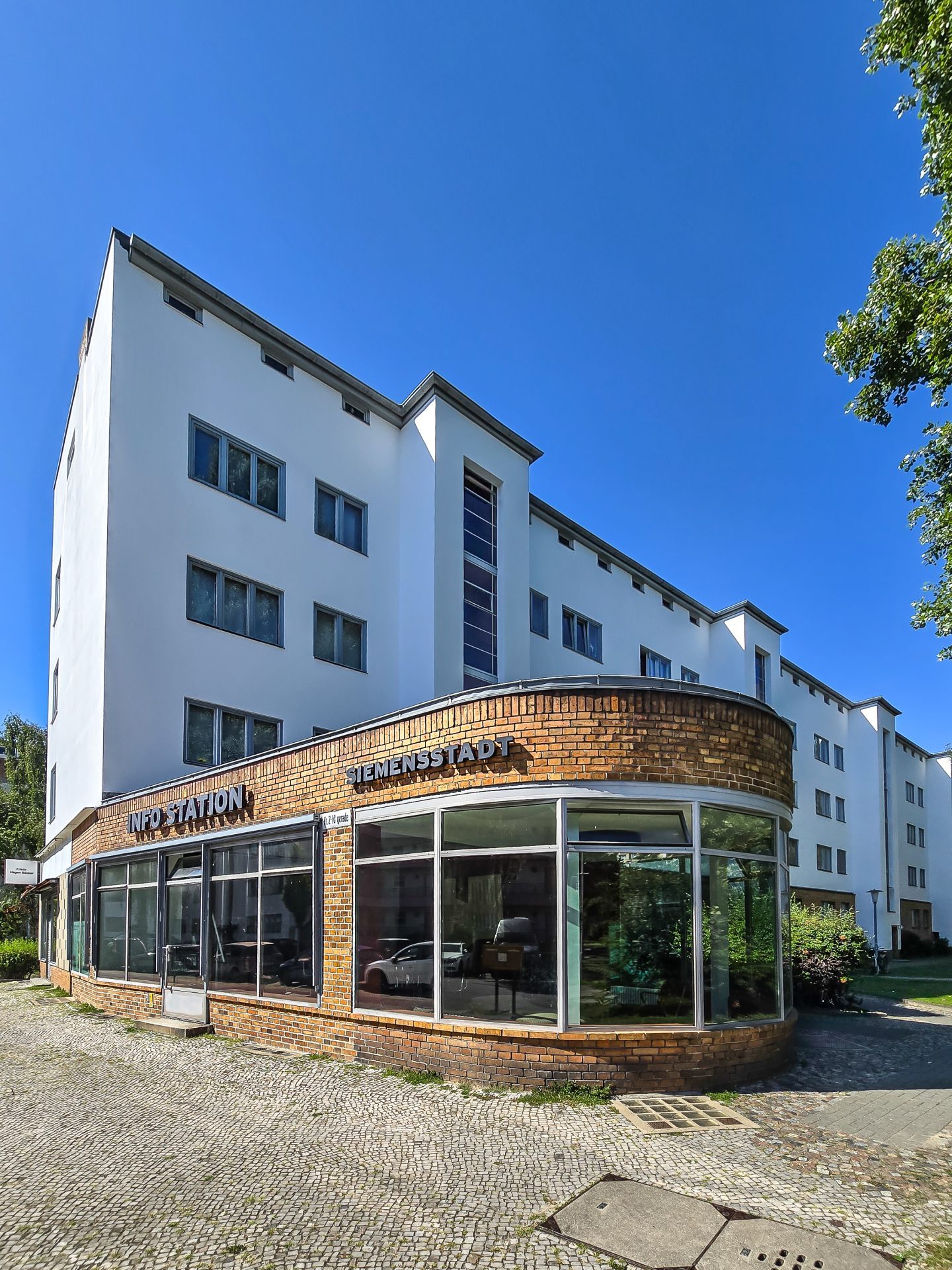

Expansion of the housing estate in the 1950s
-
After World War II, the Ringsiedlung underwent significant expansion. A number of new housing units were built to the east of Goebelplatz. Once again, the architect Hans Scharoun was significantly involved in the expansion efforts. He was the one who designed the impressive final section of the ‘Langer Jammer’ near Goebelplatz in 1956. Here, too, the ship-like architectural elements clearly bear his signature style.
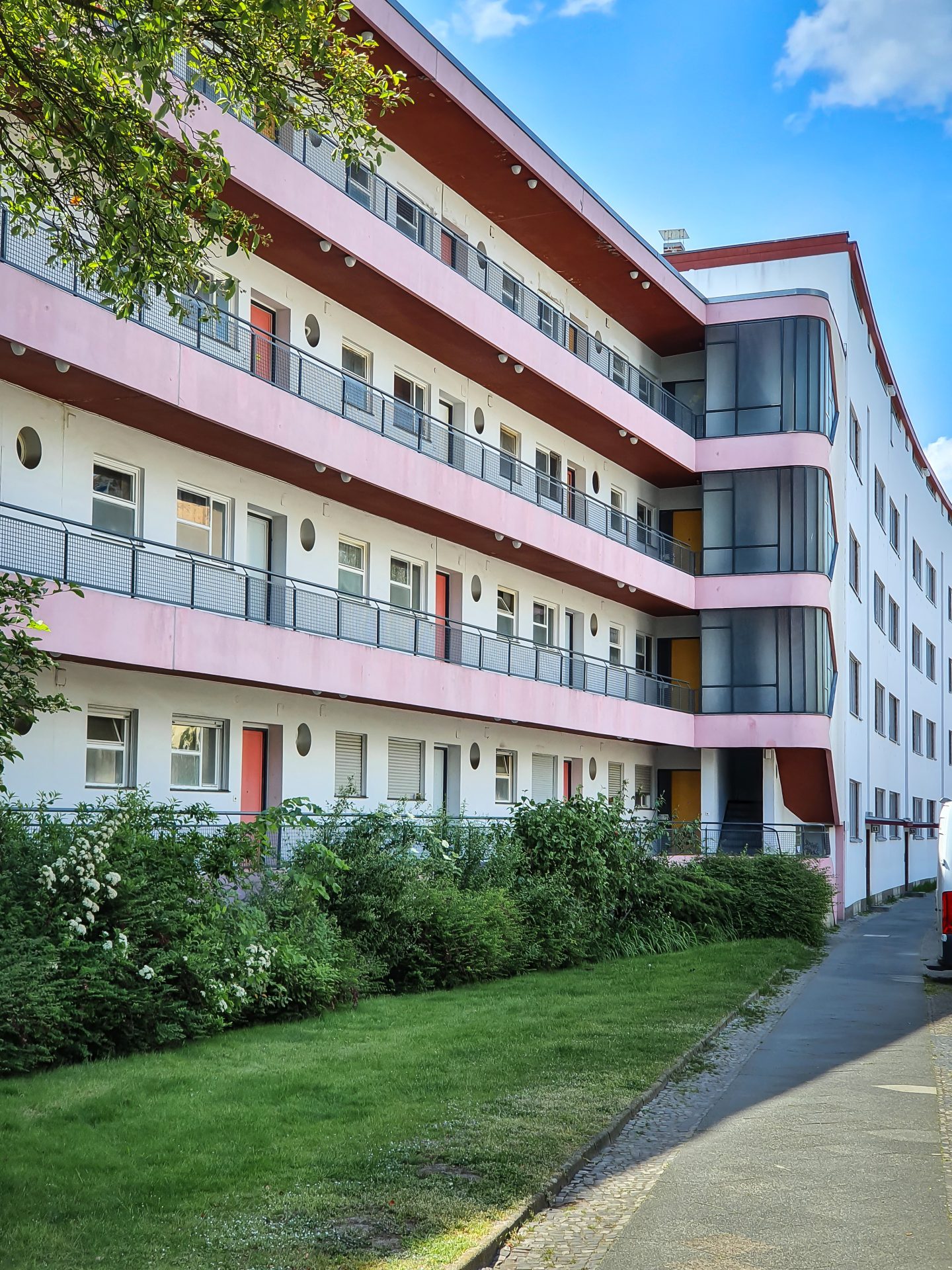
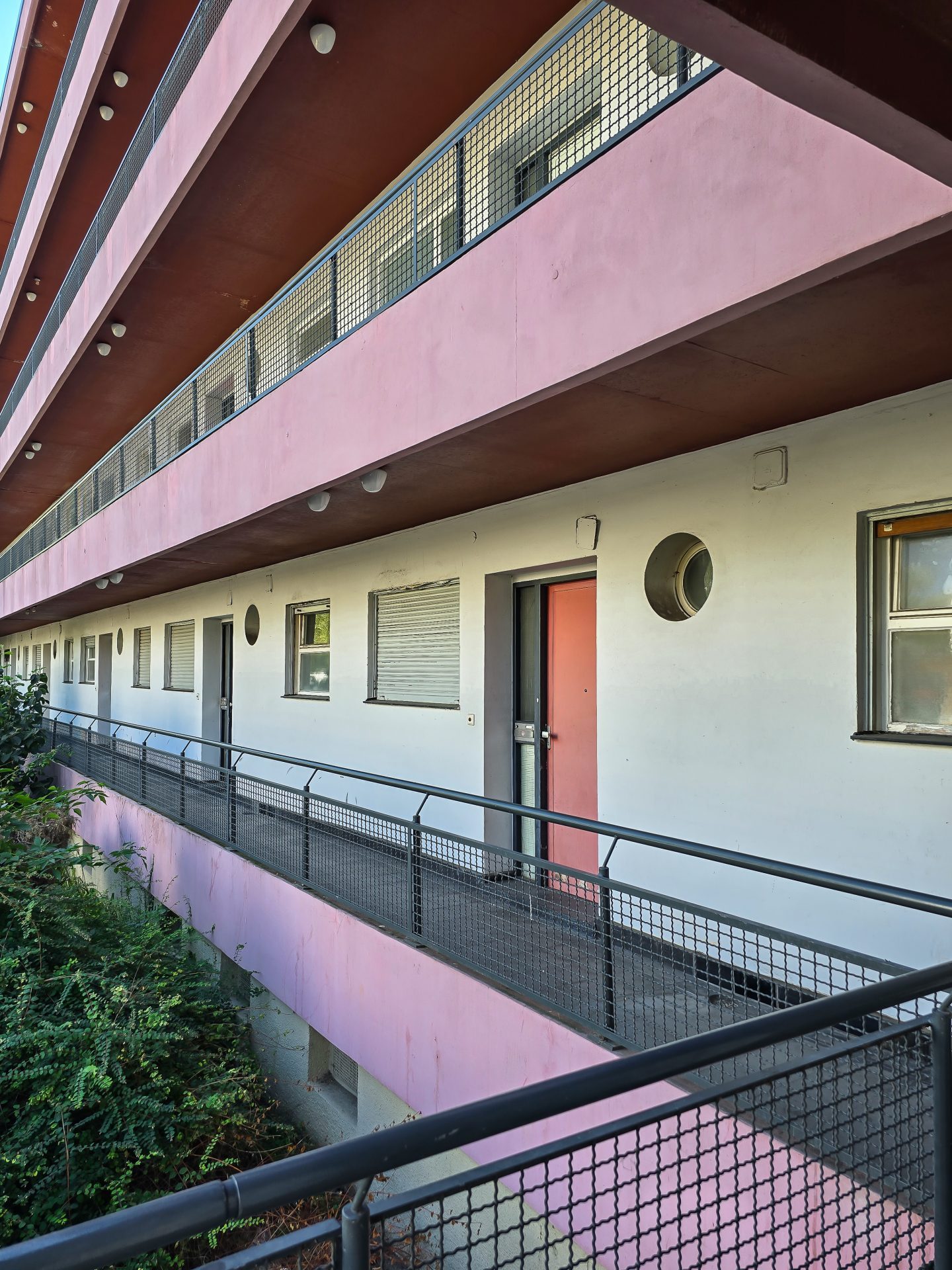
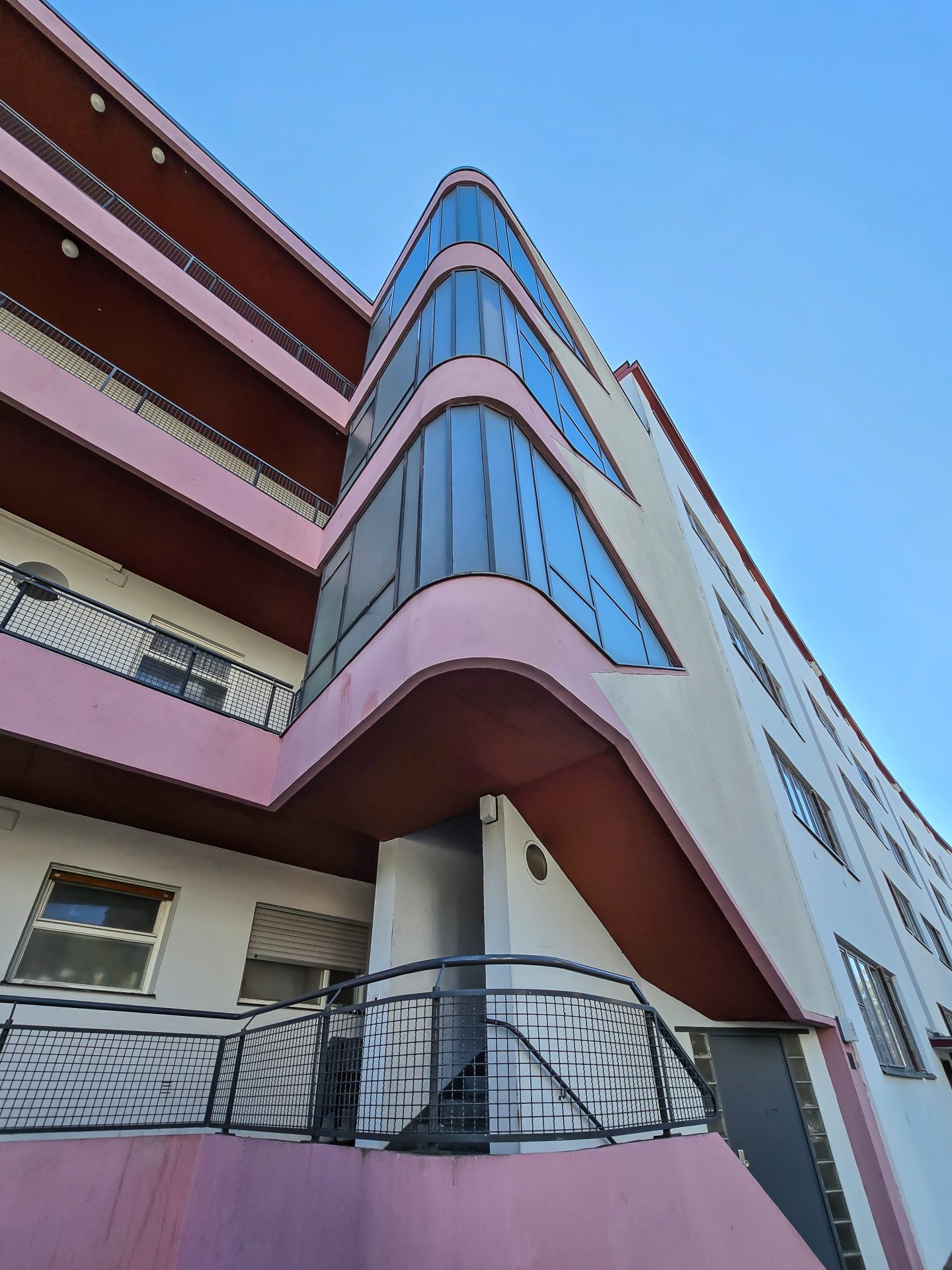
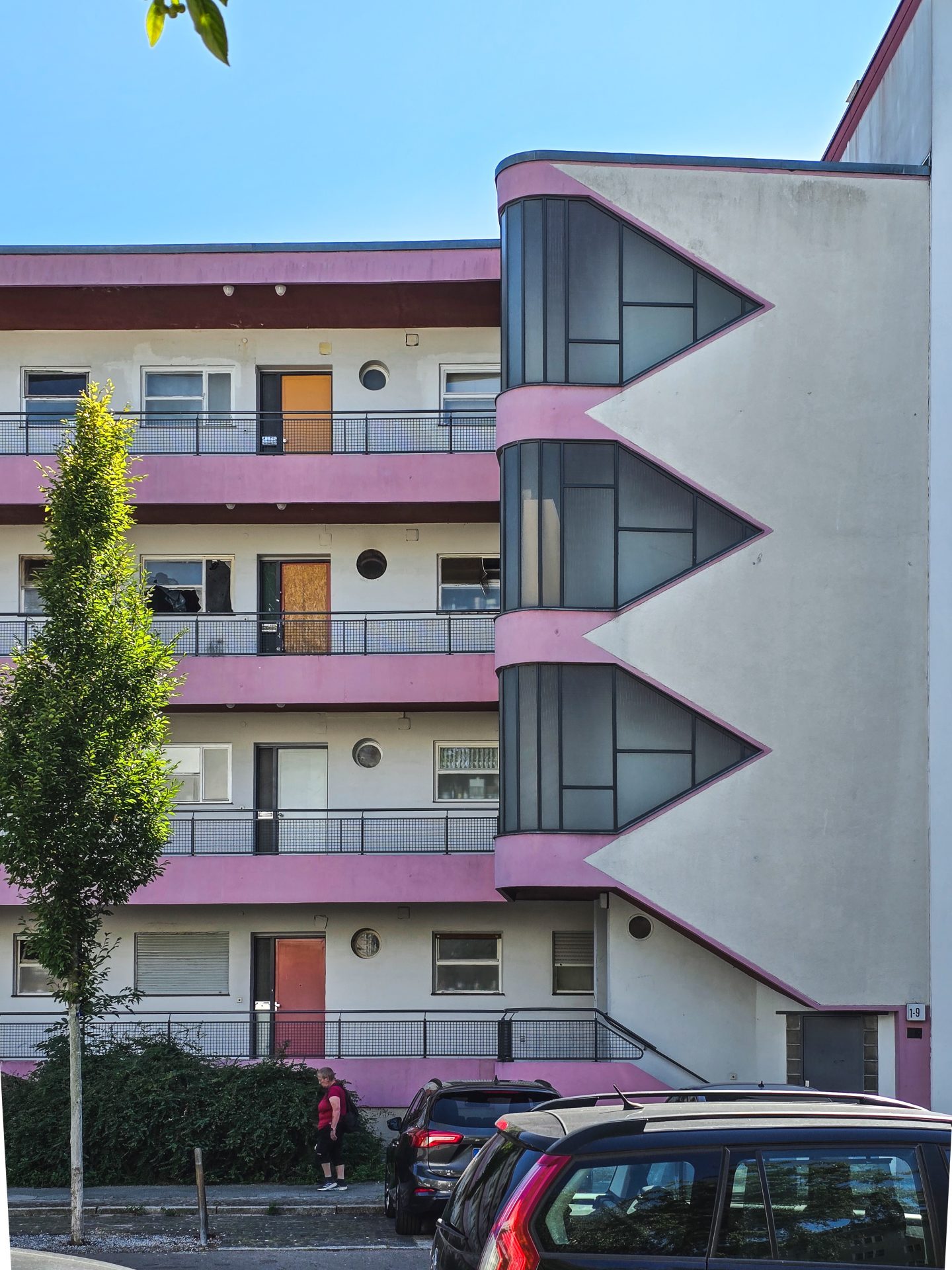
Museum flat with a panoramic view
-
The high-rise at Goebelplatz was also designed by Hans Scharoun as part of the expansion project. Studio flats with large north-facing windows were built on the top storey of some of his buildings. The architect himself moved into one such studio flat at Heilmannring 66 as soon as it was completed and lived there until his death in 1972.
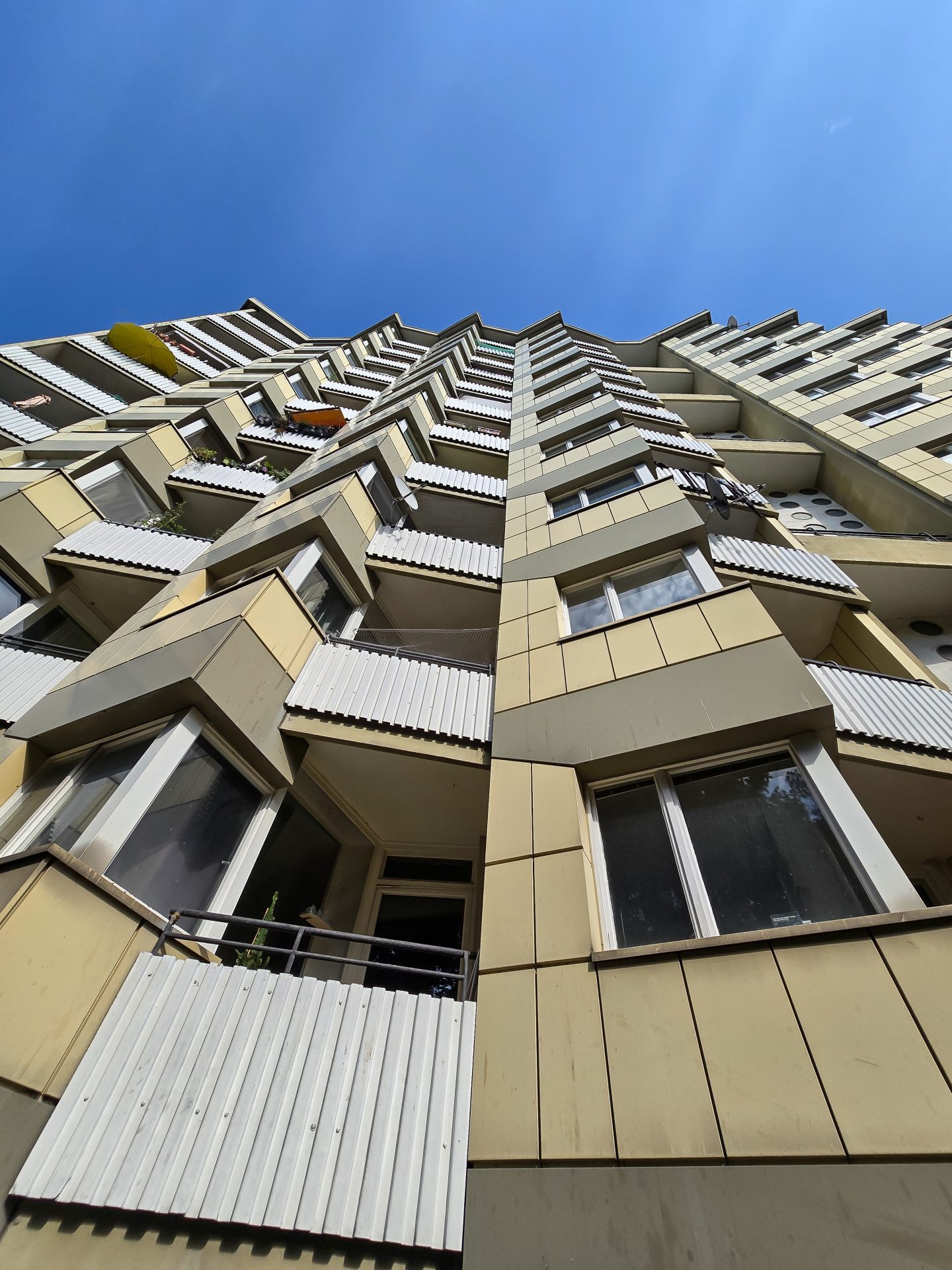

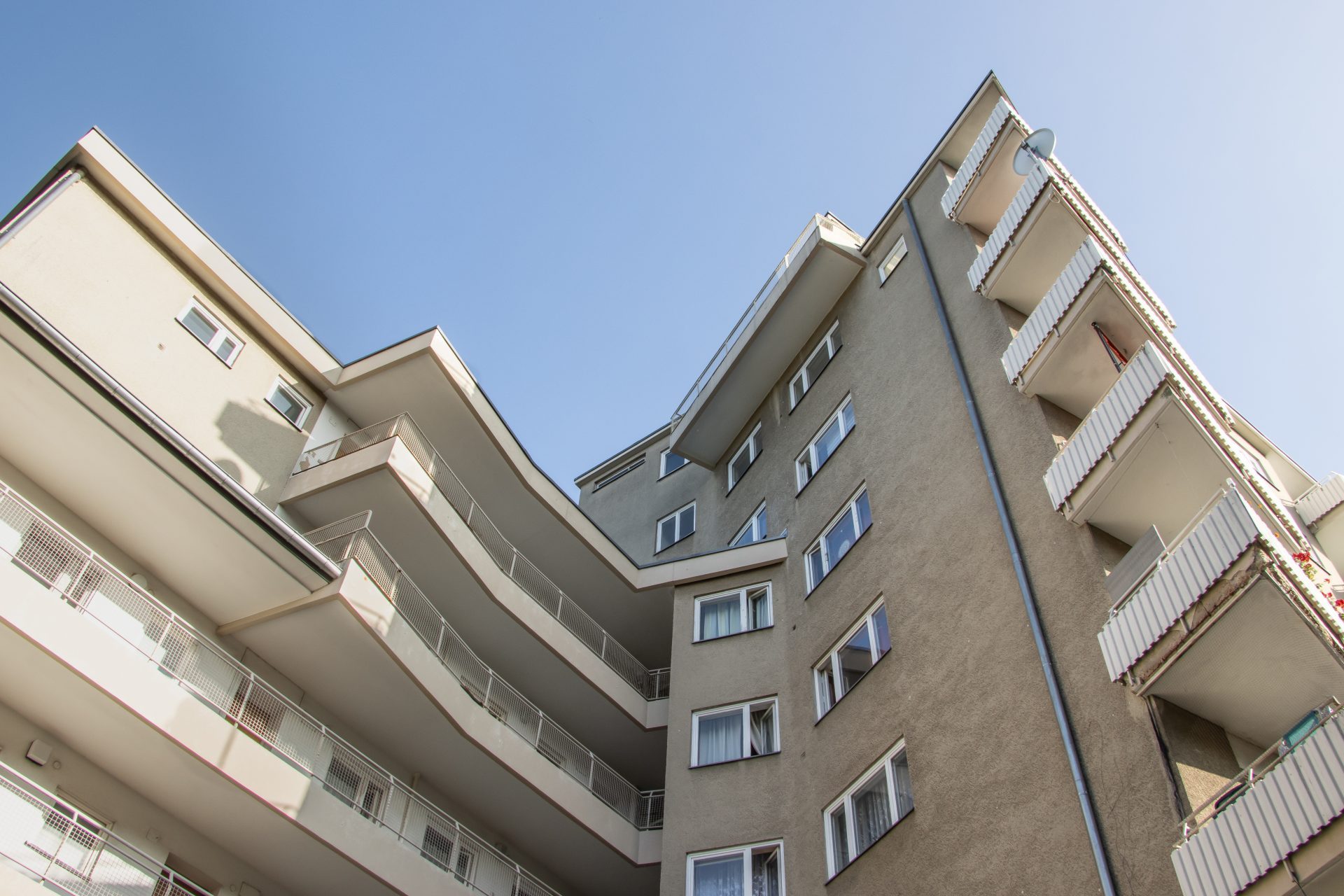
Lorem ipsum
-
Today, the “Scharoun Studio” is a museum flat which visitors can view on a guided tour.
